Blog & images © Janet Davis – All Rights Reserved
We all want a garden filled with fragrance, don’t we? There are numerous plants that can help us achieve the romance of a scented garden, especially after dark. That’s because many have evolved white or pale-coloured blossoms in their native climes in order to attract their pollinators, night-flying moths. Growing night-scented plants enhances a garden for evening enjoyment – those alfresco dinners that linger on for hours. This was my deck pergola, several years back (and sadly gone now). You can’t quite make them out, but in a container nearby was a clutch of the tender bulb Gladiolus murielae (formerly Acidanthera), which goes by the common name Abyssinian gladiolus.
That lovely, fragrant bulb is available every spring, and is worth planting a few at a time in succession, in order to have them flowering for weeks on end.
But planning for fragrance means looking at the entire season, for even if it’s too chilly to be in your garden in spring, many of those perfumed flowers can be brought in to scent the house. Here’s a roughly chronological dream team of white blossoms for garden perfume from spring to fall:
Hyacinths (Hyacinthus orientalis) are those rather buxom spring bulbs that always seem a little too stiffly perfect in the early garden, but relax in subsequent years into a more graceful form. Indoors, however, they are typical of many fragrant white flowers, however, in that their perfume seems to go quickly from intoxicating to intolerable. White varieties include ‘L’Innocence’, ‘White Pearl’ and ‘Carnegie’, below.
I’ve written about daffodils before – those I grow in my cottage meadows on Lake Muskoka, and four cultivars that I think are exceptional for their scent. But if you think of perfume and narcissus in the same breath, then you want the one that is actually harvested for perfume (yes, narcissus is part of the ‘white flowers’ group in perfumery) in France, which is of course Narcissus poeticus, the poet’s daffodil. It flowers a little later, well into spring, but its elegant flowers are sweetly perfumed.
Fragrant abelia (Abelia mosanensis) is one of those tidy little shrubs that might go unnoticed, flowering as it does in May. A Korean native, it is very hardy but it’s a good idea to site it in a partly enclosed space, where you can sniff that lovely perfume before it’s sweater weather outdoors. It also has very good fall colour.
Winter honeysuckle (Lonicera fragrantissima) was introduced from China to European commerce by Robert Fortune in 1845. Though it arrived in the United States a decade later, it’s not that well-known in North America. In my part of Ontario, doesn’t flower in February or March, but well into April or early May, along with spring bulbs, magnolias and early Japanese cherries. At the Royal Botanical Garden in Hamilton, Ontario, it is planted behind a bench on a slope in the ravine-like rock garden, where visitors can enjoy its perfume up-close (though when it first comes into bloom, the perfume is known to carry 10 metres (30 feet). It has a rather straggly shape, but that isn’t why you’d choose it for your garden.
Honey bees and bumble bees love the perfumed flowers, which start out cream and turn buff-yellow.
A delightful North American native shrub with a light but pleasant scent is dwarf fothergilla Fothergilla gardenii. Mostly native to the Appalachians and north to the Carolinian forests just north of Lake Erie, I have tempted the zone fates by planting TEN in my front garden, hoping for the honey perfume of its bottlebrush flowers…..
…. since I already know it has spectacular fall colour!
One of my favourite spring shrubs has an intoxicating perfume, and a common name to match. Koreanspice viburnum (Viburnum carlesii). In their 1967 book The Fragrant Year, Leonie Bell and Helen Van Pelt Wilson call it “a tantalizing blend of carnation and gardenia”. Its manageable size makes it a delightful addition to a border, and it offers crimson-red fall colour in colder climates as well. Here it is at the Toronto Botanical Garden.
Each Koreanspice viburnum inflorescence is a miniature bouquet of fragrance.
A related viburnum, though not quite as elegant as its Korean cousin, larger in stature and flowering a few weeks later, is the fragrant snowball viburnum (Viburnum x carlcephalum). You simply cannot imagine the heady scent beside the entrance gate at Toronto’s Spadina House gardens, when this shrub is in flower in mid-May. (Compared to Koreanspice, the perfume is slightly soapier.) That brings up a good design pointer for using perfumed plants: site them where people are sure to smell them, such along a path or beside a gate, or next to a bench where people can sit and enjoy the scent.
Daphnes prefer cooler summers so they do best in warmer parts of the northeast with a little shade. A favourite and fairly cold-hardy daphne blooms at the same time as the fragrant viburnums. Daphne x burkwoodii ‘Carol Mackie’ has variegated leaves and light-pink flowers that fade to white. Its heady perfume has been likened to that of rubrum lilies.
If you have a place to grow one – that is, a sturdy pergola or arbour that cannot be weighed down by massive weight – consider a white Chinese wisteria (Wisteria sinensis ‘Alba). In The Fragant Year, its perfume is described as “deliciously spicy with cinnamon, different from the usual bouquet (the honey and lilac they describe as being the perfume of purple wisteria) and coming a week later).
What would spring be without the evocative perfume of lilacs? For a white-themed garden with lots of room, consider the fabulous Russian introduction Syringa vulgaris ‘Krasavitsa Moskvy’ (4m tall x 2.5m wide or 12’ tall x 8’ wide). The name means ‘beauty of Moscow’, and so it is, with its pale pink buds opening to highly-scented, double, white flowers.. An old-fashioned French variety that’s easy to find in nurseries is ‘Mme Lemoine’, below, also with double white flowers. As the authors of The Fragrant Year point out, it was Gertrude Jekyll who observed that “doubling of flowers increases fragrance because of the extra petals.”
Less well known than lilacs and viburnums is the native North American fringe tree (Chionanthus virginicus). Of this handsome, large shrub, Van Pelt Wilson and Bell write: “We have planted it to take full advantage of its two weeks of exquisite scent, and near lilacs, so that the front lawn and the house, too, with windows open, are enveloped with fragrance”. They describe its scent as having “the sweetness of white clover or the first cut of alfalfa flowers …or dry sweet woodruff.” Here it is at the Toronto Botanical Garden.
And a closeup of the interesting staminate flowers that give the plant its name.
Lily-of-the-valley (Convallaria majalis) is called muguet in France where, for centuries it has starred in the traditional spring celebration called Muguet du 1er Mai. On the first day of May, all the French public land is opened up so the citizens can walk freely there to pick the muguets, which are also sold in little nosegays and boutonnieres everywhere. And, of course, Muguet, a 1905 fragrance by Jacques Guerlain is one of the world’s most famous perfumes.
I have a love-hate relationship with lily-of-the-valley, because it has escaped in my garden, below, when I ignored it decades ago; it has now seized almost every square inch of my front yard. You can dig up the pips, but you’ll always leave a little bit behind, and that’s all it takes to begin re-invading. Having said that, I do love the enigmatic nature of its scent, which wafts on the wind in May, is sweet and not at all overpowering – the sort of perfume that is impossible to put in a bottle.
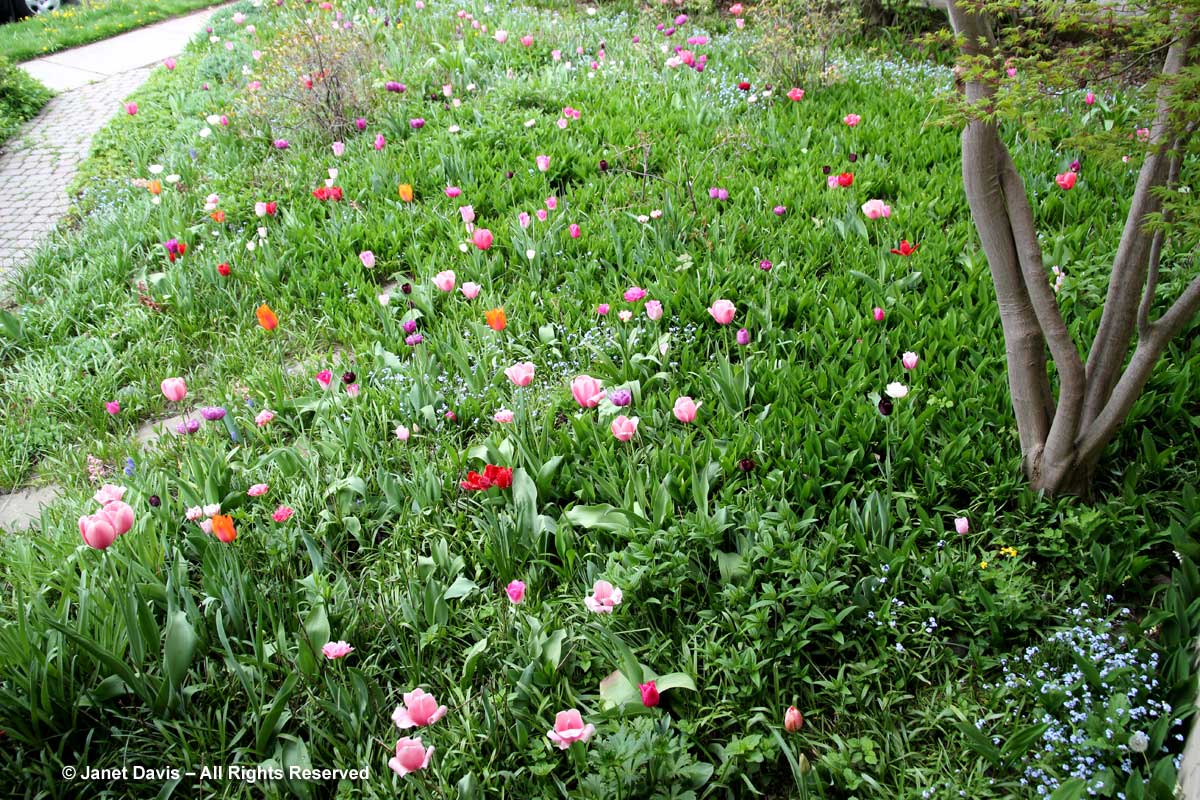 In late spring – usually the first week in June in Toronto – comes a scent that wafts on the night air. It’s when the black locust tree (Robinia pseudoacacia) is in flower. Weedy as this native tree might be, the blossoms are undeniably wonderful (and good for bees as well).
In late spring – usually the first week in June in Toronto – comes a scent that wafts on the night air. It’s when the black locust tree (Robinia pseudoacacia) is in flower. Weedy as this native tree might be, the blossoms are undeniably wonderful (and good for bees as well).
Sweet rocket or dame’s rocket (Hesperis matronalis) is one of those old-fashioned, late spring wildlings I would love to have in my garden, and though it’s renowned as a self-sower, so far it’s resisted by seeding efforts. So I always make an early June visit to Toronto’s Spadina House, where it consorts beautifully with bearded irises, lupines and peonies – mostly in mauve-pink, but also in a shimmering white. Its perfume is reserved for night, however, so keep that in mind when you put it to the sniff test. Sweet rocket is a biennial, best grown in slightly alkaline soil.
Peonies (Paeonia) are classic June perennials, and there are many white-flowered varieties with gorgeous perfume, often reminiscent of Damask roses. Two of the finest are old-timers: ‘Festiva Maxima’ (1851) and ‘Miss America’ (1926).
Many mock-orange shrubs (Philadelphus sp.) are coarse and straggly in bearing, and their brief flowering in early summer doesn’t justify their occupying prime real estate in the garden. In Toronto, they often lose significant new shoots to winter-kill, and at any rate, they need skillful pruning of old wood (experts recommend one-third per year) immediately after flowering to keep growth vigorous. In addition, they’re not all fragrant. Garden writer Louise Wilder called these mock-oranges “scentless or soulless…. beautiful and dumb”. So what’s to recommend them? Well, that sweet citrus perfume hinted at in their common name – something Van Pelt Wilson and Bell describe in the type P. coronarius as “a delicious blend of orange fruit (not blossoms) and jasmine”. Of the old Lemoine hybrids, ‘Belle Etoile’ is deservedly popular, but not very hardy in the east, given its Mexican P. couteri parentage. ‘Mount Blanc’ has fruity perfume, but is hard to find in its true form. However, Philadelphus ‘Innocence’ is grown at the Toronto Botanical Garden in a protected, semi-enclosed courtyard.
And look how they make sure visitors can appreciate its fragrance up close!
Garden pinks (Dianthus sp.) are early summer perennials renowned for their fragrance, usually described as essence of cloves. They thrive on lime in their soil and very sharp drainage. Though most are pink, there are a few classic white-flowered pinks, including the double Dianthus ‘Mrs. Sinkins’ and the pink-eyed cheddar pink Dianthus ‘Dottie’, below.
Gas plant (Dictamnus albus) is a perennial that boasts an unusual attribute that can inspire party tricks in adventurous gardeners: in full bloom, it exudes a combustible aromatic oil called isoprene, which can be lit with a match to produce a blue flame, thus one of its alternative common names, burning bush. The foliage, when crushed, has a lemony scent but the flowers are also fragrant. Once established, gas plant is very long-lived and not easily moved, given its long tap root. It is very popular with butterflies and bees.
Valerian (Valeriana officinalis) is popular with herbalists. Like all plants with ‘officinalis’ in their Latin names, it was used by medieval apothecaries to treat various ills; further back in history, Hippocrates and Galen mentioned it in their writings. Its sweet scent makes it a lovely addition to the June perennial garden, and it’s a good plant for bees.
Lilies can be among the most heavily-perfumed plants in the garden (many people cannot tolerate them in a bouquet indoors, finding their perfume funereal), but of course it depends on the type.For white-colored garden themes, the popular Oriental lilies ‘Everest’ and ‘Casa Blanca’ are among the most fragrant available, but I’ve had trouble keeping these lilies around beyond a year or two. Whether that’s climate- or cultivation-related, I don’t know. Better are the straight species below, including lime-loving Madonna lily (Lilium candidum), left, and regal lily (Lilium regale), right. In The Fragrant Year, the authors say: “Regal scent is powerful, the fragrance drowning out all others, a strong, spicy emanation with a hint of cinnamon, almost too much of a good thing. As for the storied Madonna lily, which is often a challenge to grow because of its susceptibility to botrytis, the authors recommend wood ashes – as in almost 100%, with just a little soil!
And a little shout-out to my favourite lily: the Orienpet (Oriental x Trumpet) hybrid ‘Conca d’Or’, shown below in my cottage garden on Lake Muskoka. Though not technically white, its pale cream-yellow colour, rugged disposition and beautiful scent make it a worthy candidate for my list.
We have now come to the roses of late spring and early summer. Though most are pink, there are a few white “old roses” with beautiful perfume for your fragrant garden, including the Alba rose ‘Mme Legras de St. Germain’, below….
….and the lovely Damask ‘Mme Hardy’, below, which David Austin Roses describes as having “a delicious scent with a hint of lemon”.
Rugosas have a strong scent and the white form of the species, Rosa rugosa f. alba, is no exception. Of named cultivars, the hybrid rugosa ‘Blanc Double de Coubert’, below, has a fragrance that is, in the words of the famed rosarian Constance Spry, “the apotheosis of the white rose”.
The large-flowered climber ‘City of York’ offers a spectacular shower of creamy blossoms whose fragrance is said to fill the garden. (This rose, and the ones above, only flower in early summer.)
Among the July and August-blooming perennials, summer phlox has a soft, old-fashioned perfume, something The Fragrant Year authors describe as having “an indefinable reaching quality, a bit like clethra, yet not so syrupy, a light musty sweetness that belongs to phlox alone”. For the white garden, you can’t do better than the award-winning (and mildew-resistant) Phlox paniculata ‘David’.
Speaking of phlox, this was an interesting – and fragrant – July combination at Spadina House several years ago: Phlox paniculata ‘Franz Schubert’ and the scented flowers of Adam’s needle (Yucca gloriosa).
Subtle perfume can be found in some echinaceas, and is said to be a mild combination of honey and phlox in the variety ‘Fragrant Angel’ (part of the Prairie Pillars™ breeding group).
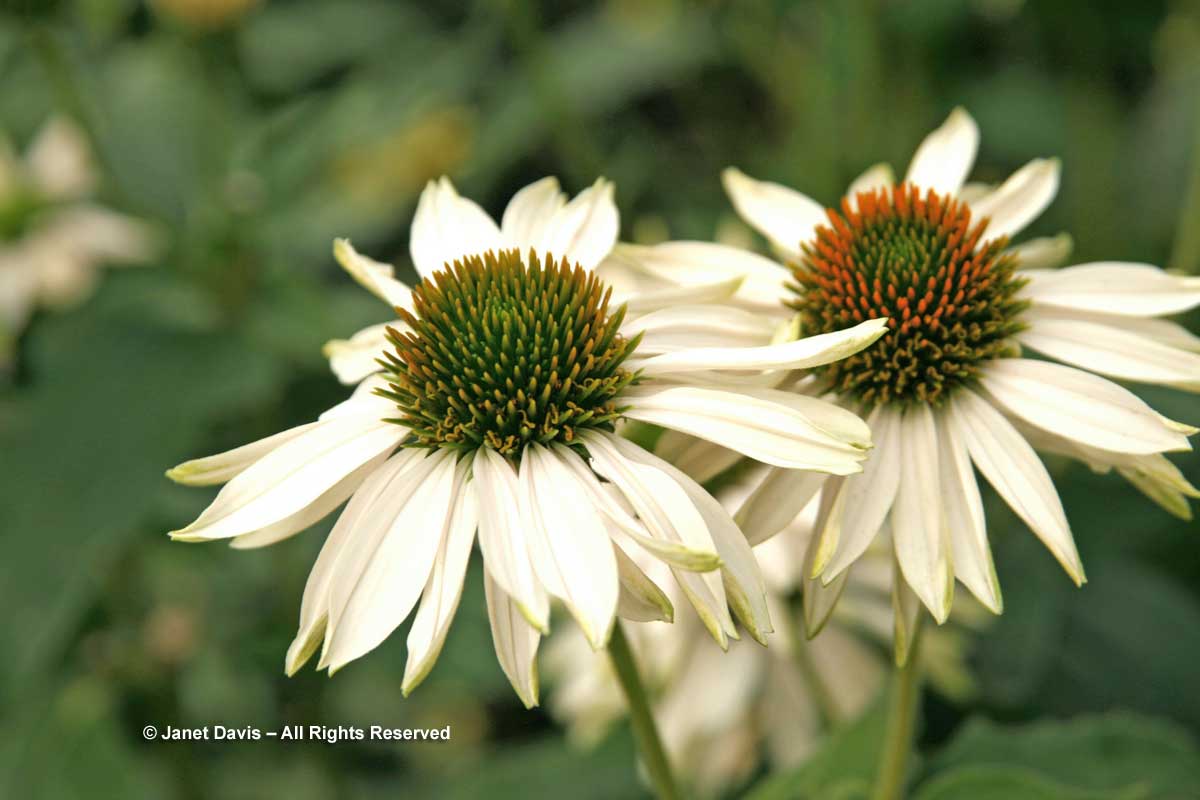 Several August-blooming hostas (most tracing their parentage to H. plantaginea) have fragrant flowers, including the two below, ‘Fragrant Bouquet’, left, and ‘Hoosier Harmony’, right.
Several August-blooming hostas (most tracing their parentage to H. plantaginea) have fragrant flowers, including the two below, ‘Fragrant Bouquet’, left, and ‘Hoosier Harmony’, right.
Summersweet or sweet pepperbush (Clethra alnifolia) is a suckering, native North American shrub which, as its common name indicates, has sweet-smelling flower spikes in mid-late summer (mostly August). It needs moisture in the soil, and thrives in dappled light.
Summersweet is an excellent shrub for attracting hummingbirds and all kinds of bees.
Though some might complain about its tendency to seed here and there, sweet autumn clematis (Clematis terniflora) is like a starry blanket of “honeyed sweetness” white perfume in September.
Seven-Sons tree (Heptacodium miconioides), the honeysuckle relative collected by plant explorer Ernest Wilson in China, is a deciduous shrub or rather ungainly small tree. Its small, sweet-scented flowers open in September and are heavily visited by bees and butterflies. The Toronto Botanical Garden’s horticulturist Paul Zammit calls this period a “feeding frenzy”. Following the flowers are attractive red calyces.
There comes a time in October in my own Toronto garden when there’s a beautiful show in a far corner, as the fall snakeroot or bugbane (Actaea simplex, formerly Cimicifuga) opens its incense-perfumed spikes just as the fall monkshood (Aconitum carmichaelii ‘Arendsii’) reaches its azure-blue crescendo. As a finale, it is simply unbeatable (until the blaze of autumn leaf colours begins). That soft fragrance is also present in the dark-leaved fall snakeroots such as ‘Brunette’ and ‘Black Negligee’. They like moist, rich soil and part shade.
A few words now about some tender plants that add perfume to the white garden – and there are lots of those, obviously, given that the long-tongued moths looking for white flowers at night often hail from tropical and subtropical places.
Flowering tobacco (Nicotiana alata) is a classic addition to a night garden – but I’m referring to the true species, which unfortunately is not much to look at during the day, when its flowers close. But at twilight, they open and emit what Van Pelt Wilson and Bell call “a heavy emanation of auratum lily”. Plant this annual, which can reach 1.8 metres (5 feet) in rich soil, in a protected spot near where you sit so its perfume can be trapped.
I grew Star jasmine or Confederate jasmine (Trachelospermum jasminoides) as a tender subtropical vine outdoors on my sundeck for a few summers, trimming it back and bringing it indoors in fall. It was a lovely accompaniment to the Absyssinian gladiolus in that pot in the first photo above. I visited the Vatican gardens years ago, and star jasmine was arranged over a series of arbours there – fabulous! And I loved it combined with red bougainvillea on Market Street in San Francisco. Sadly, not an outdoor winter plant for us, but since it’s readily available at certain nurseries in spring, it’s worth the price as a lovely temporary climber.
Some years ago, I was strolling around the Montreal Botanical Garden after a heavy rain when I was assailed by a bewitching perfume in the lovely herb garden there. It took me a while to pinpoint the source: a healthy lemon balm plant (Aloysia citriodora). Not only were the flowers fragrant, but the leaves were lemony too.
There are lots of tender summer bulbs with fragrant white flowers, but I’ll mention just two here: tuberose (Polianthes tuberosa) and summer hyacinth (Galtonia candicans). The galtonia is a good choice for a scented border.
Of course, even if you don’t live in California, you can always bring out a potted gardenia to make your visitors swoon (or perhaps, as with me, remember that high school prom). Here’s Gardenia jasminoides ‘August Beauty’ at its finest.
Finally, a little tease….. As a bee photographer, I have spent time beside a “cover crop” field of buckwheat (Fagopyrum esculentum), below, and watched the bees work the white flowers. Buckwheat honey is quite a dark delicacy and not my favourite, but those lovely flowers do smell just like honey! You don’t have to grow it as a cover crop or green manure like the farmers do, but a few plants here and there in the white garden would be quite lovely, no?
I’ve left out many favourites, I’m sure, but these should offer a little something to dream about in January, until the ‘white garden’ outside the back door of many of us cold-climate gardeners melts!

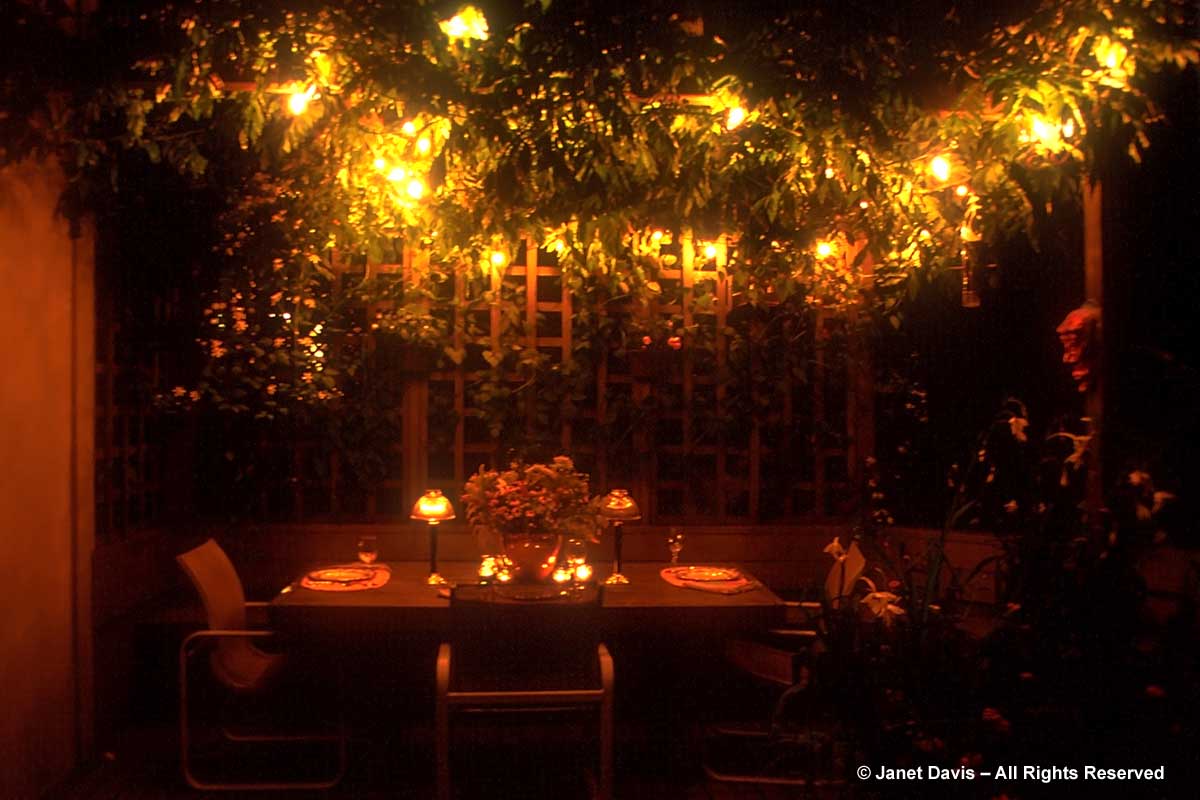
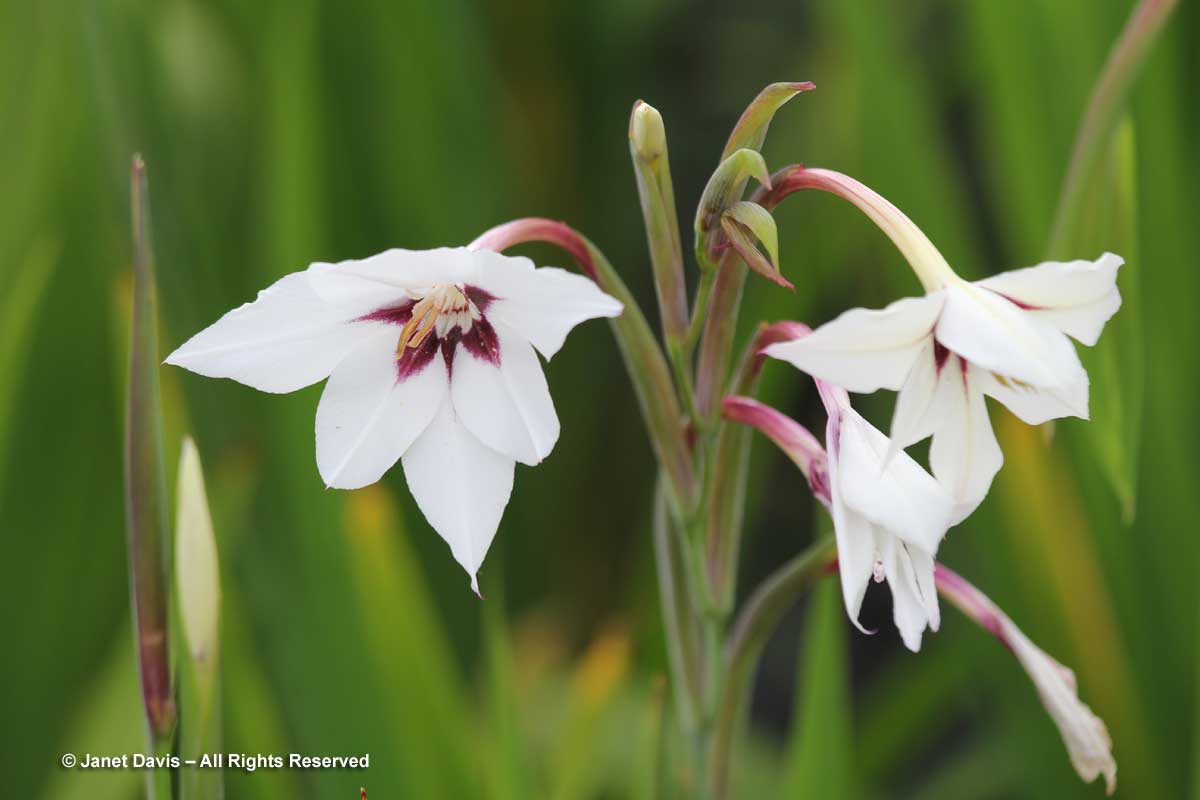
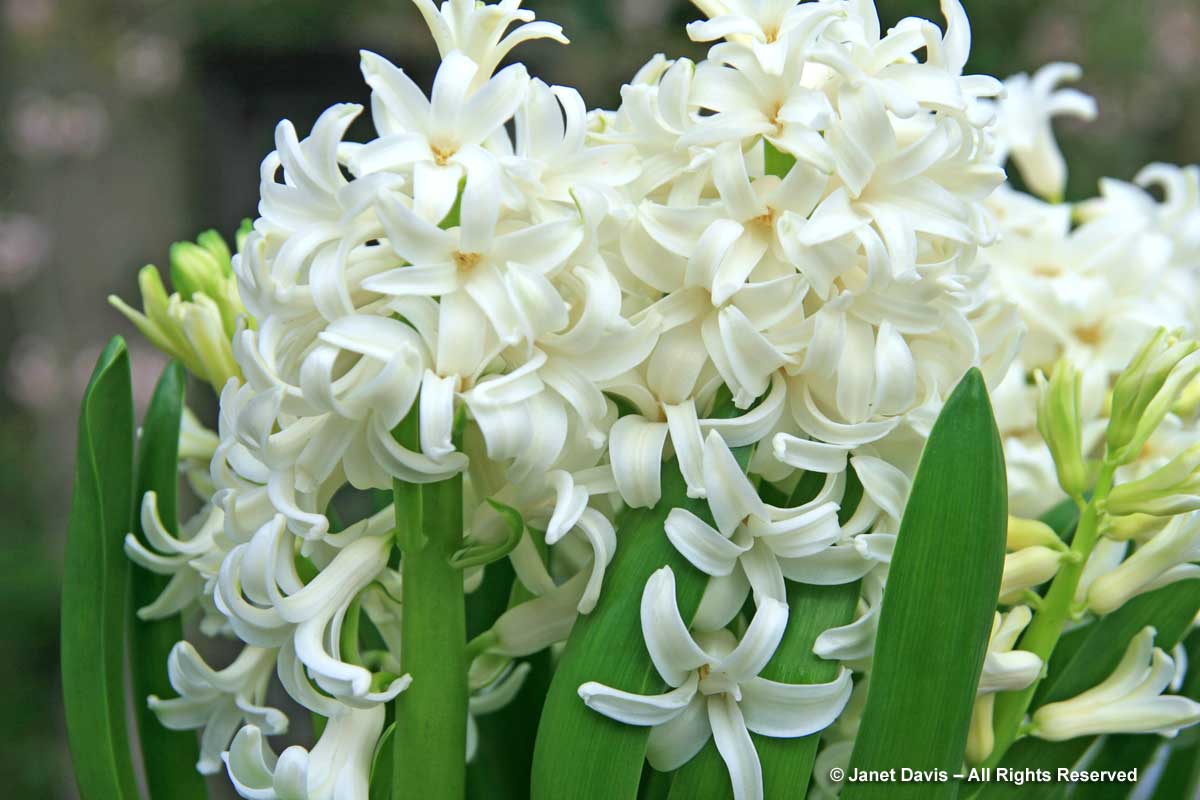
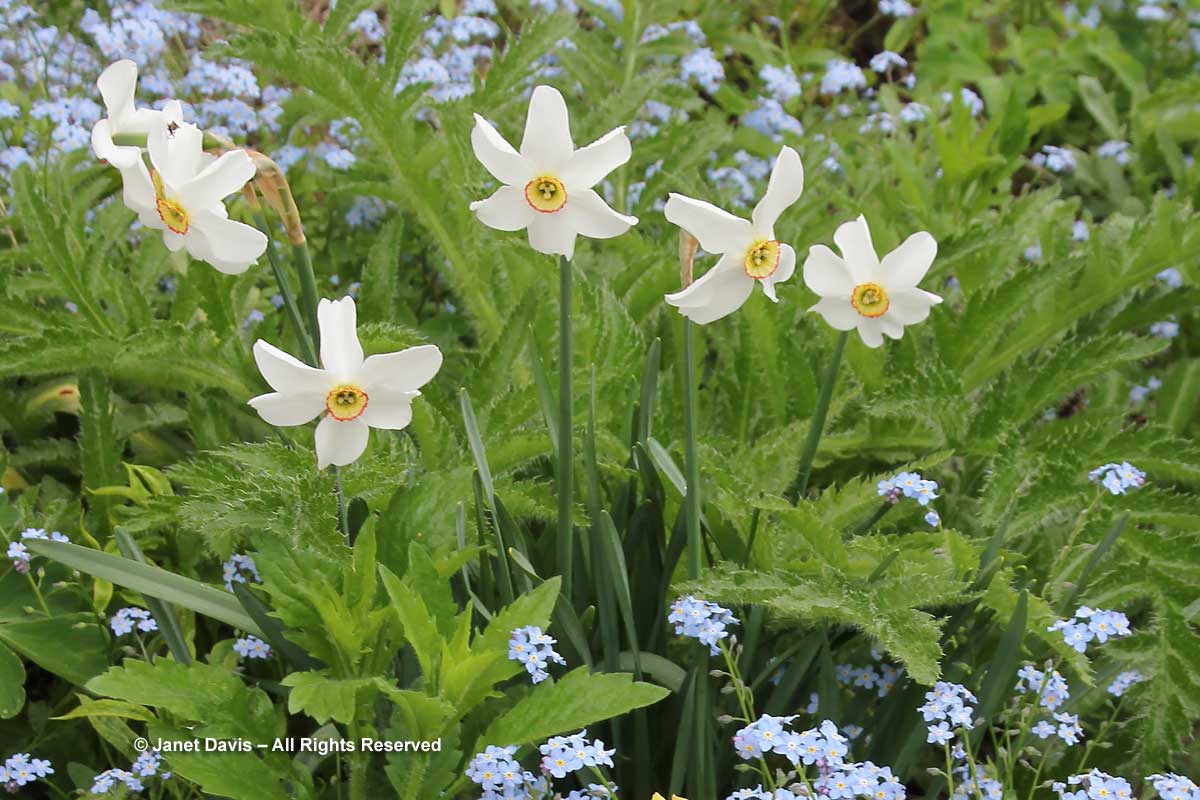
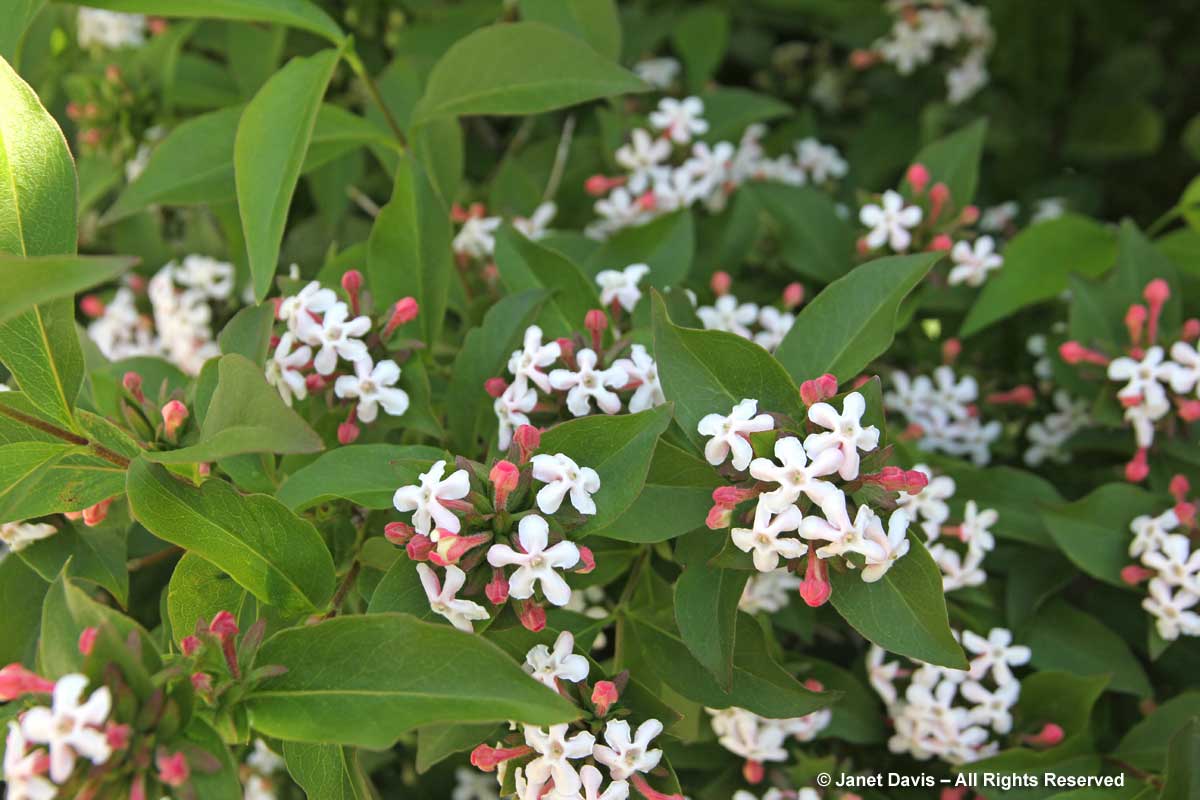
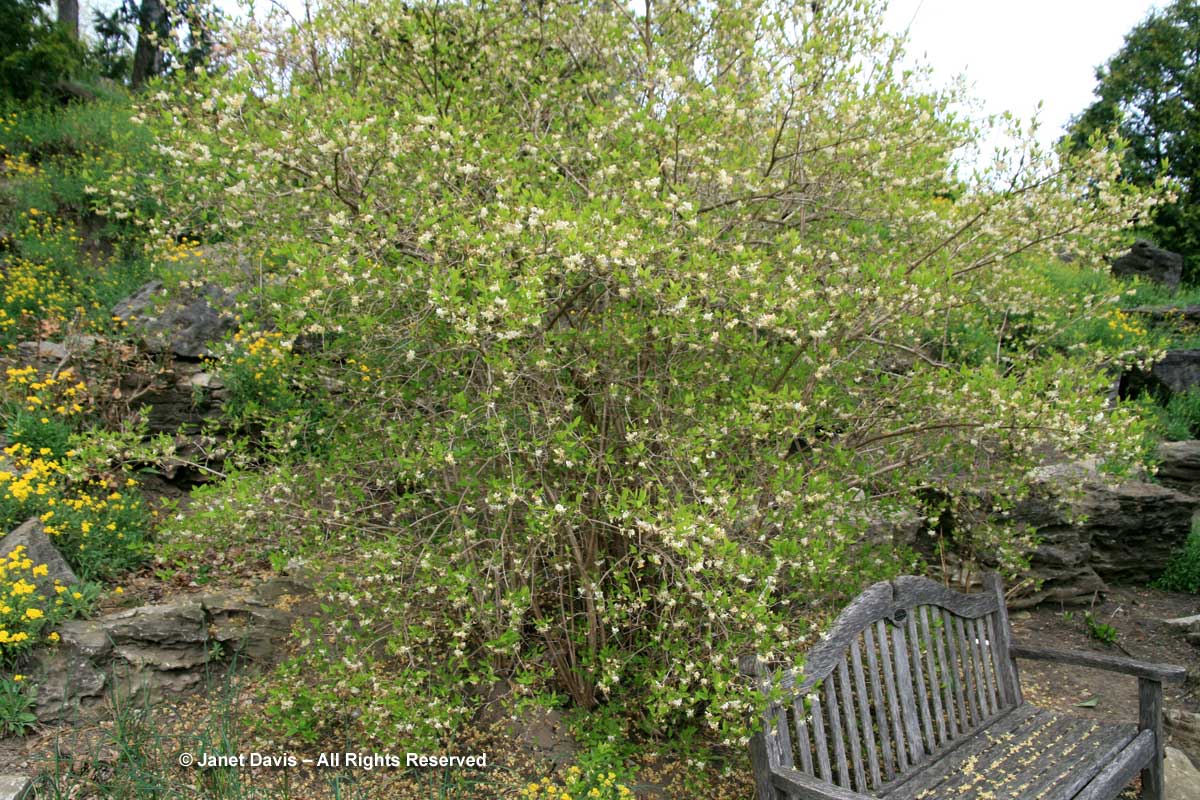
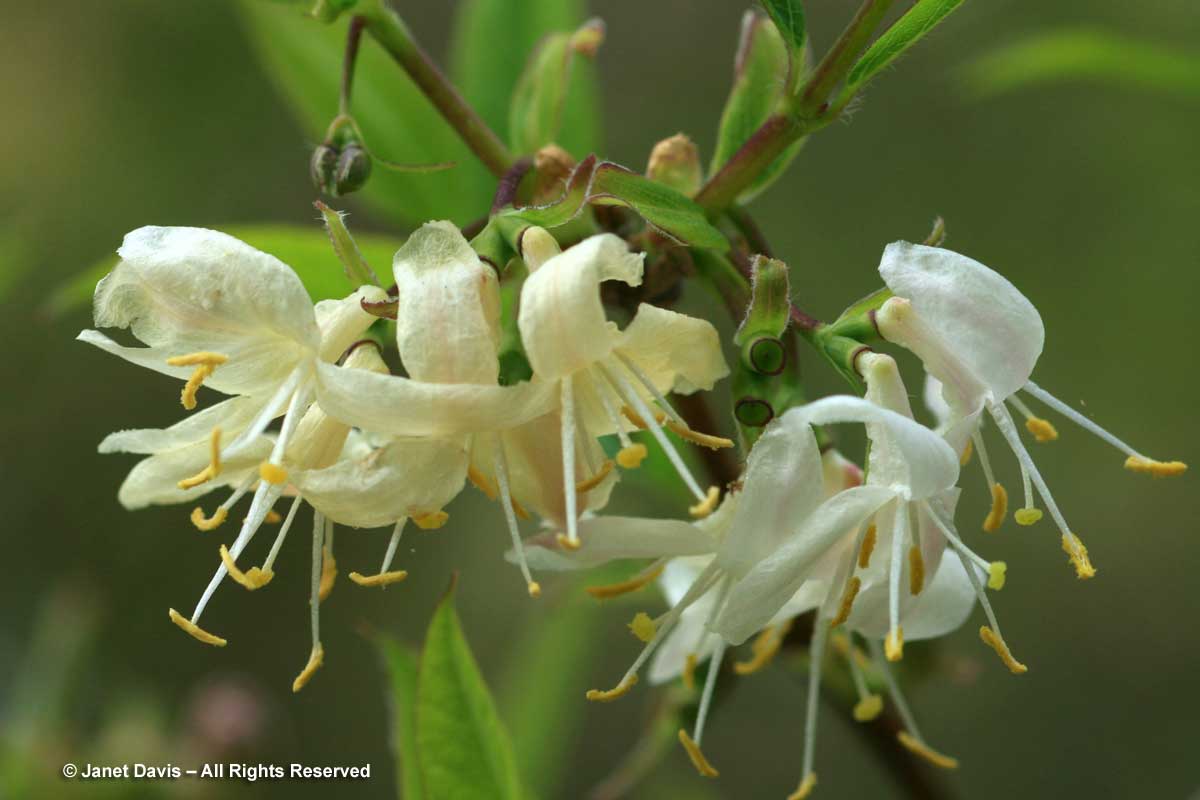
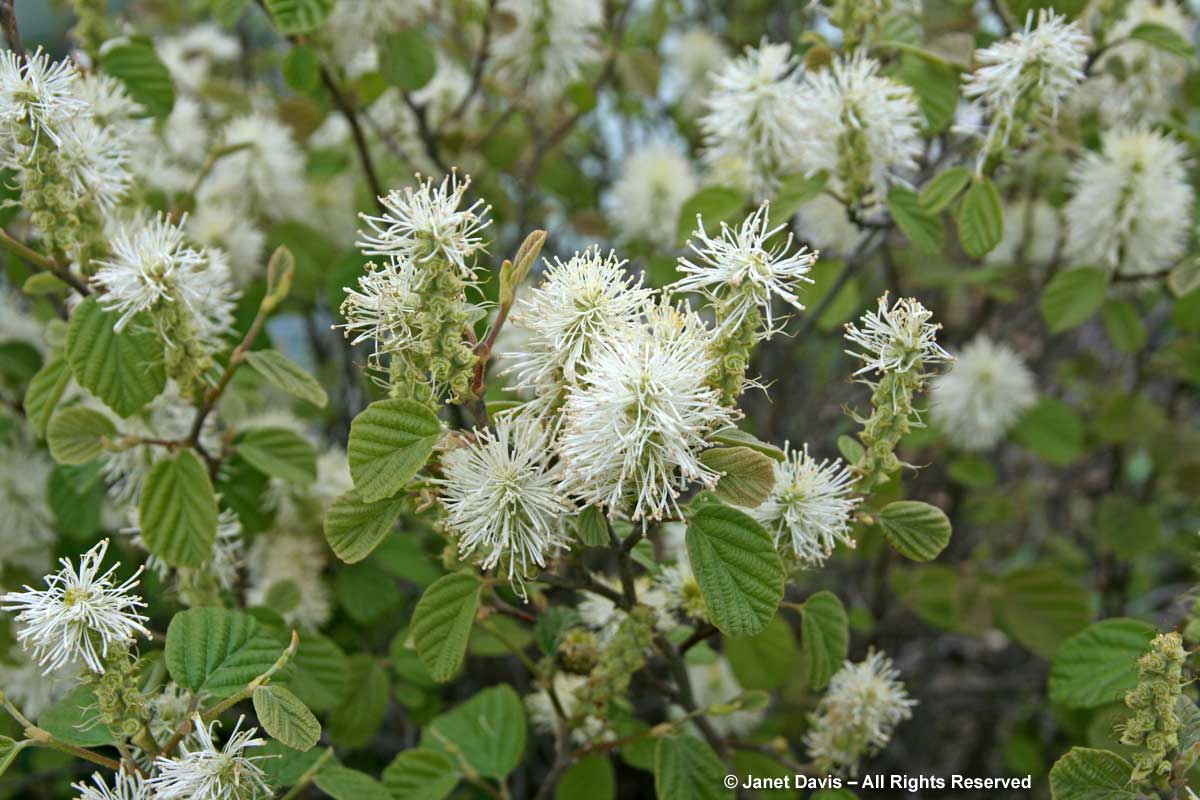
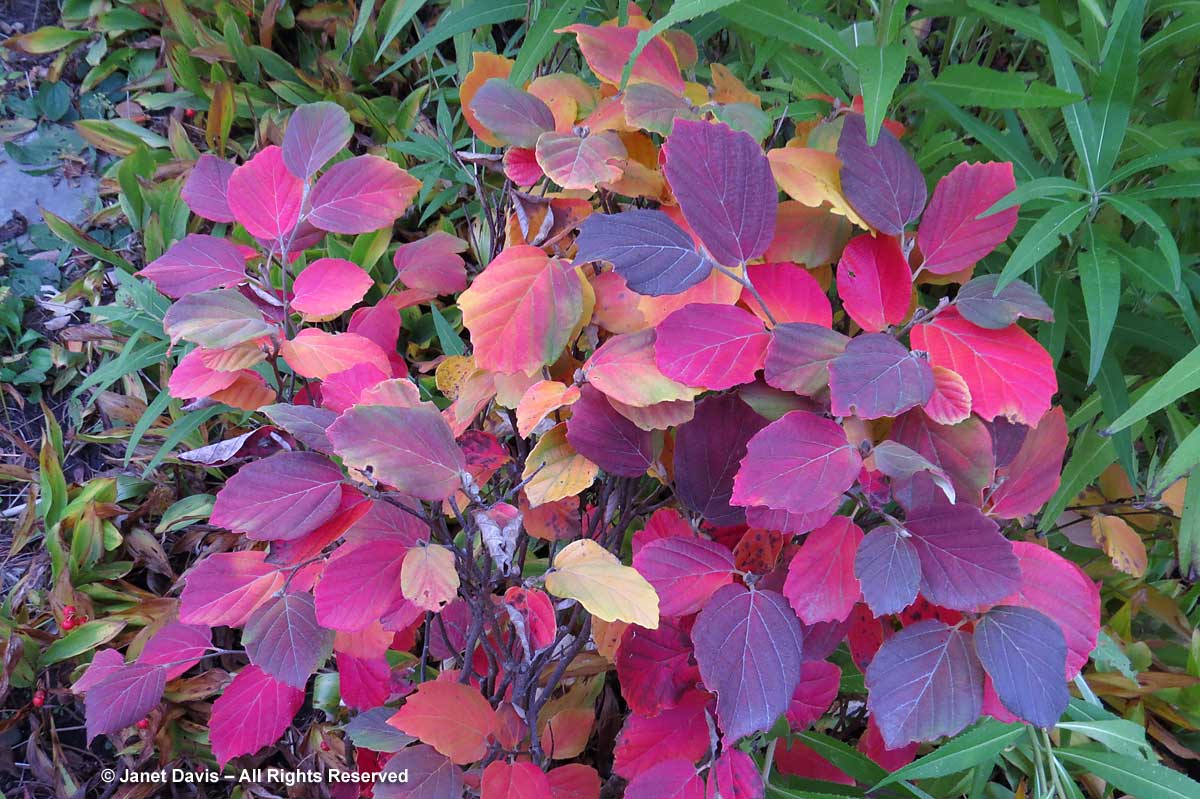
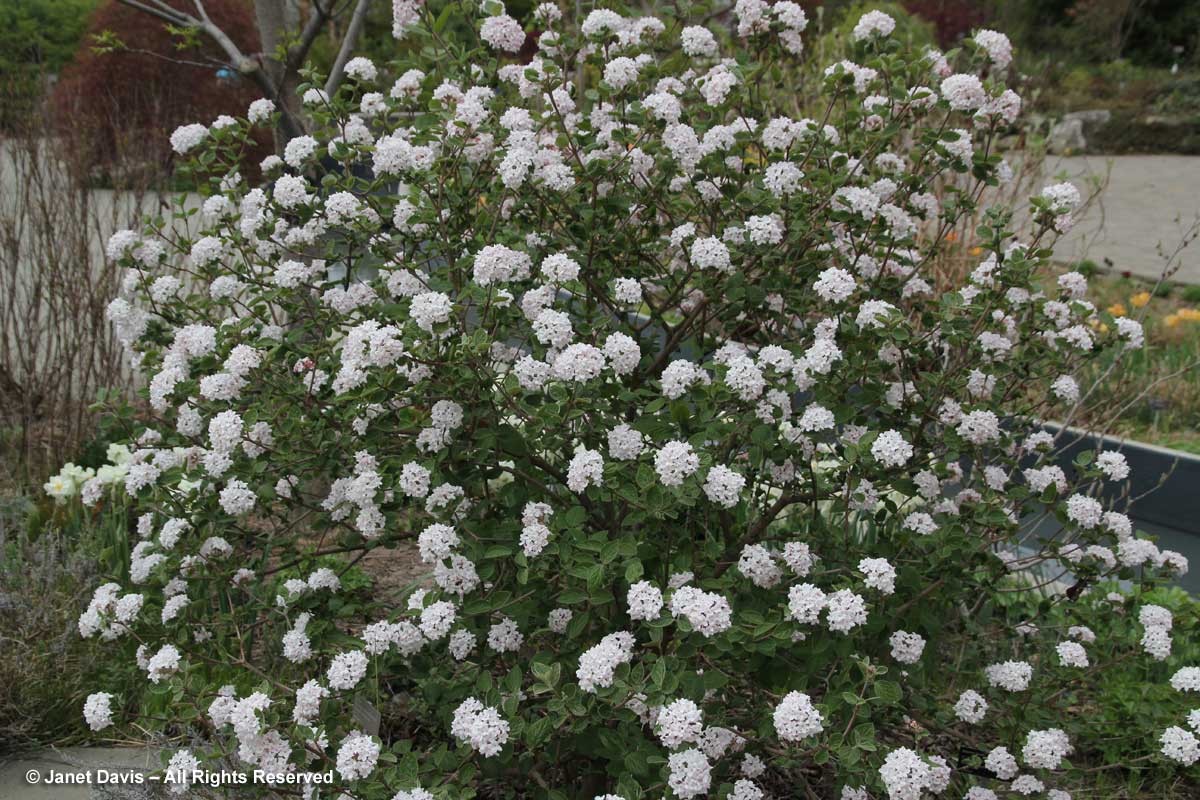
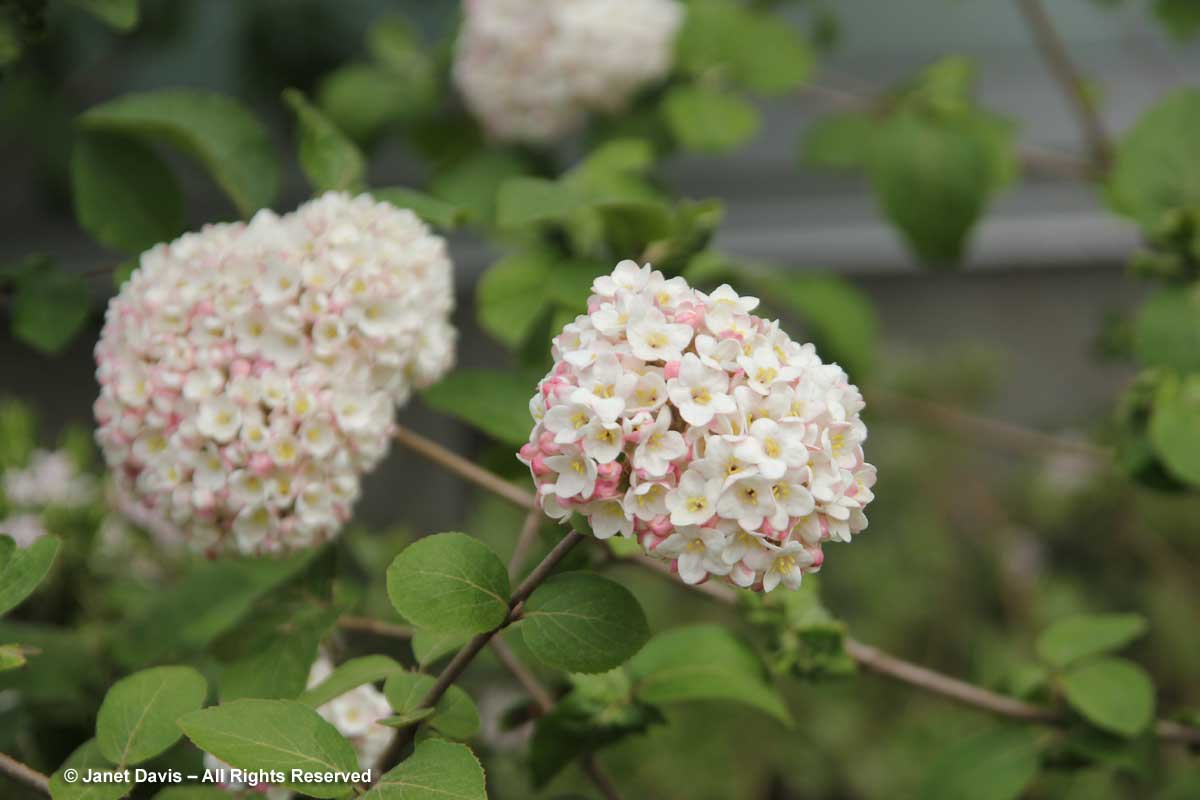
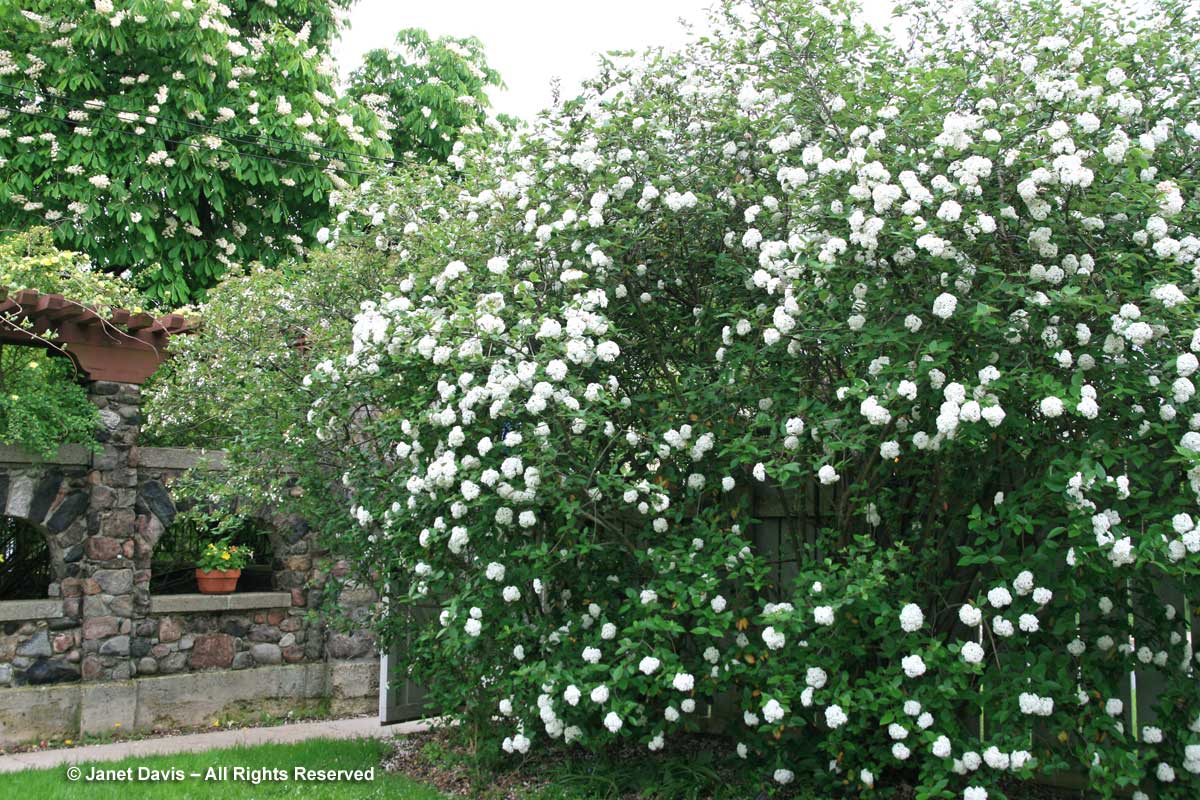
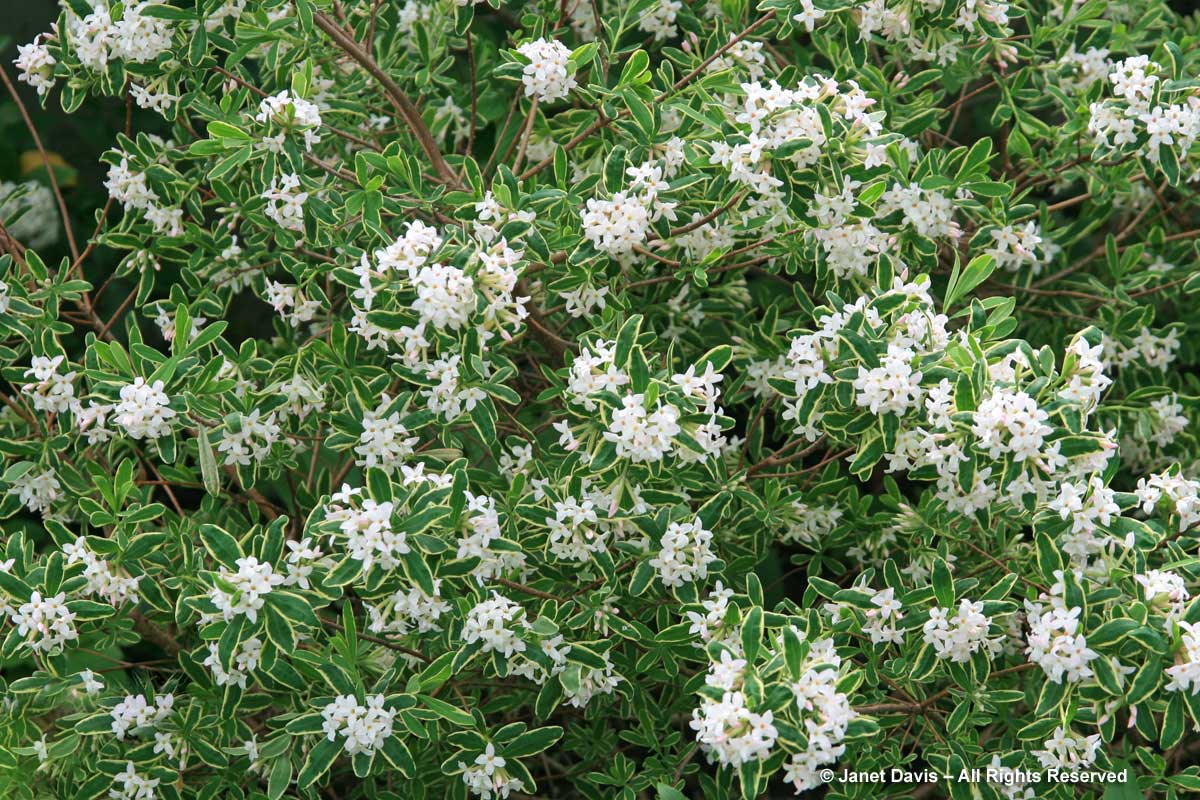
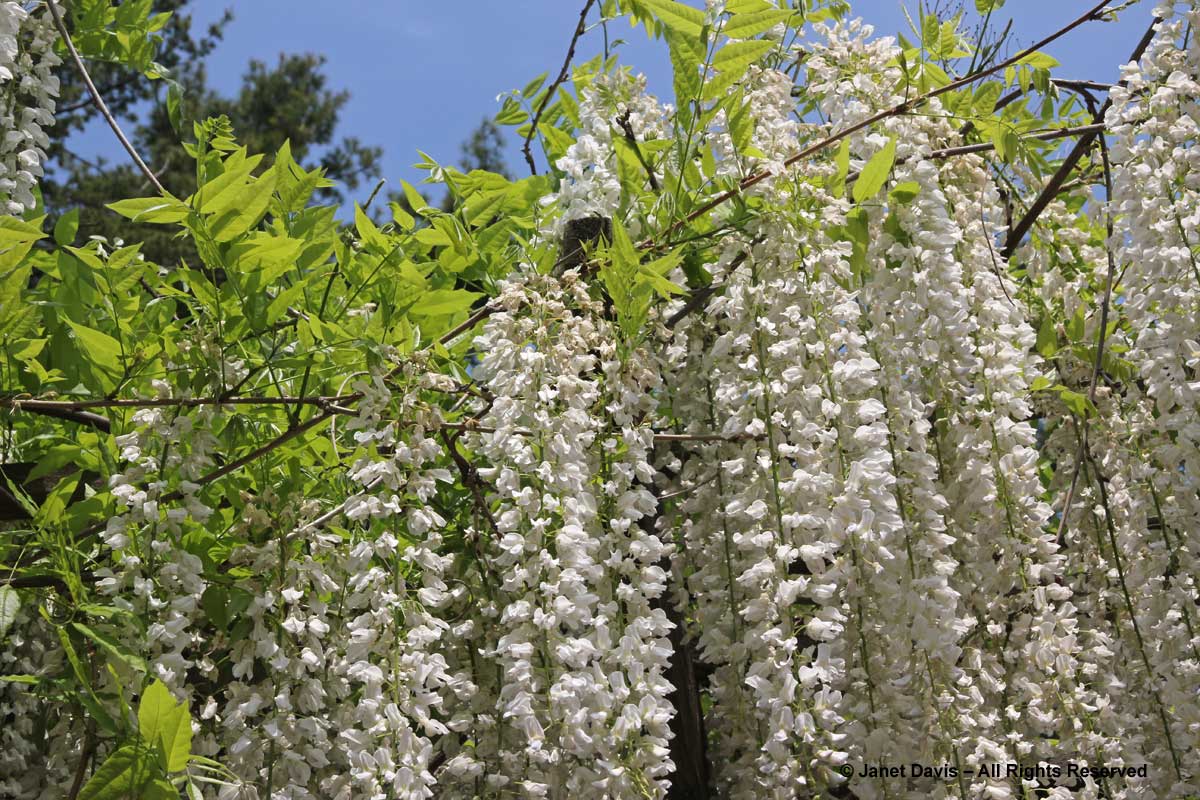
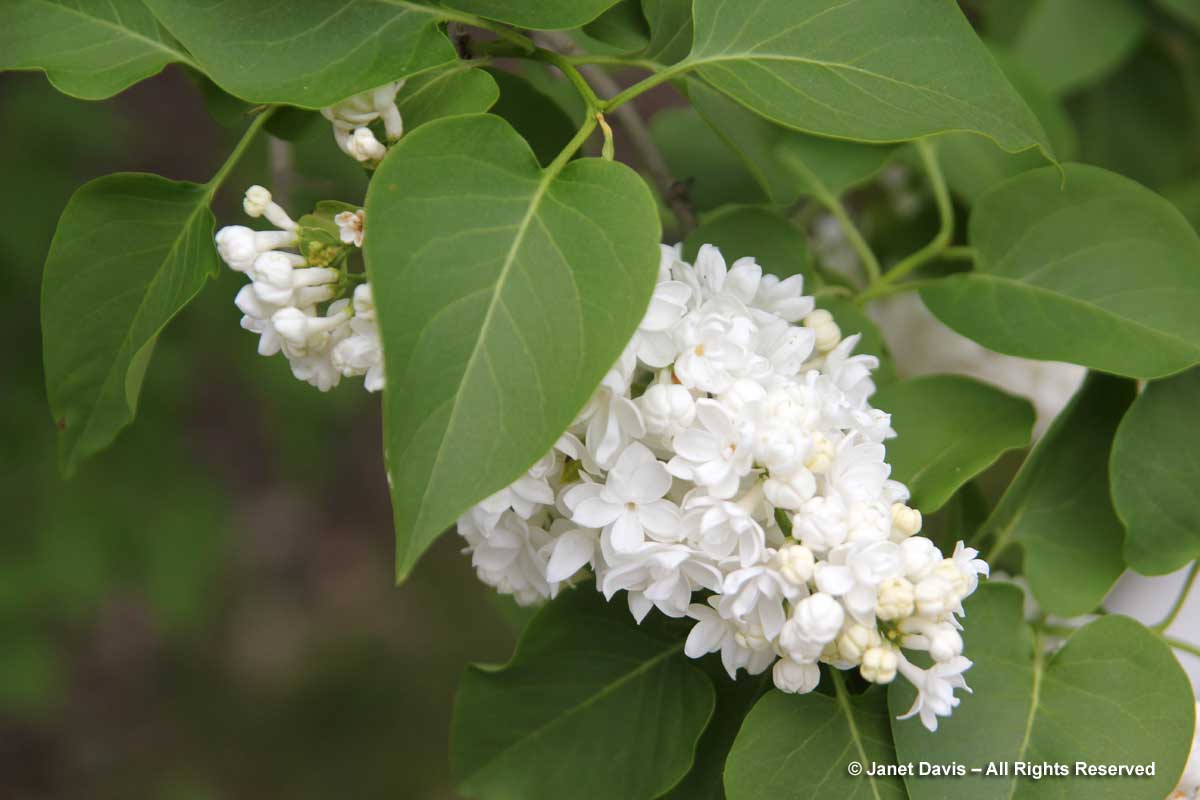
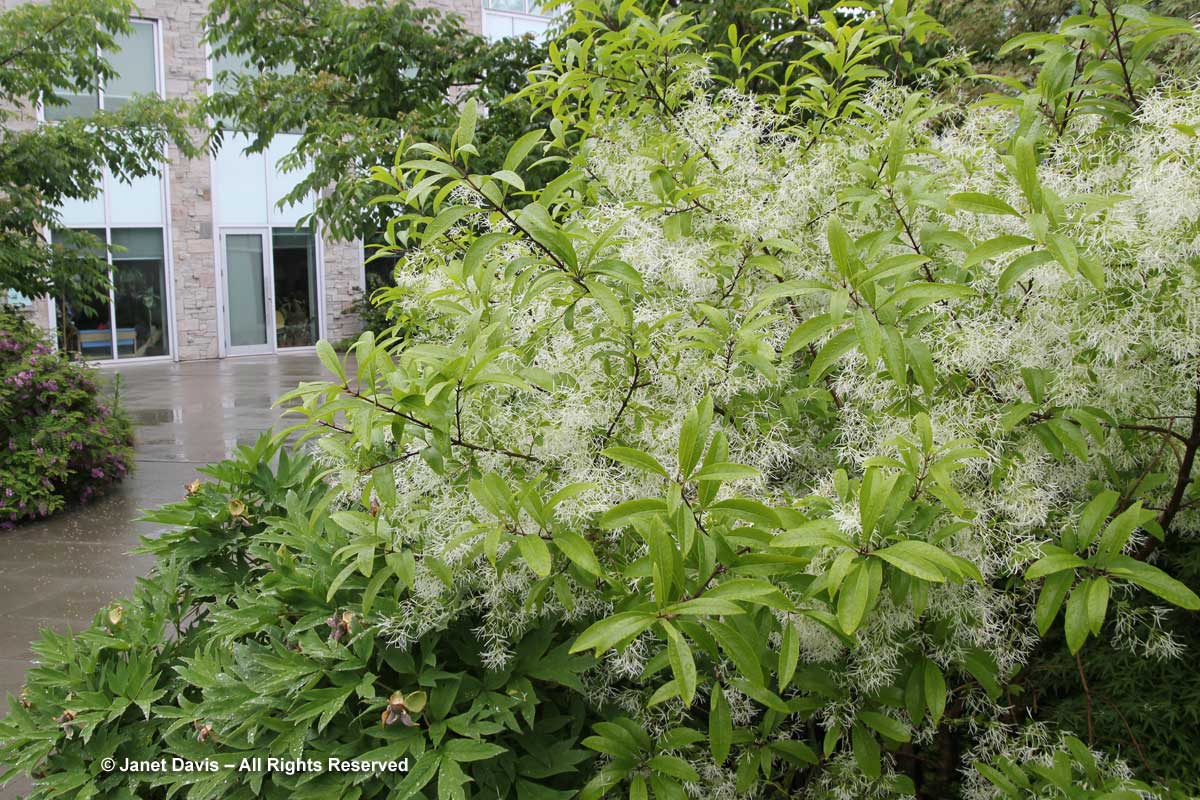
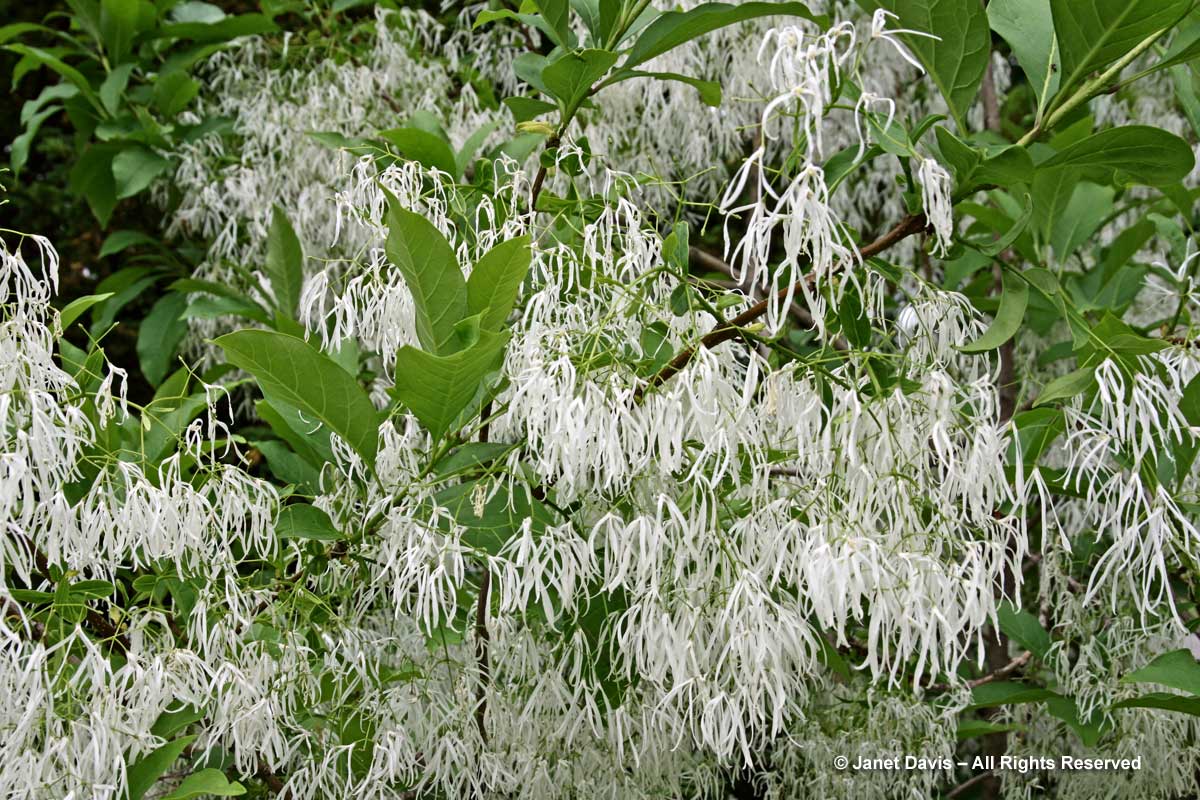
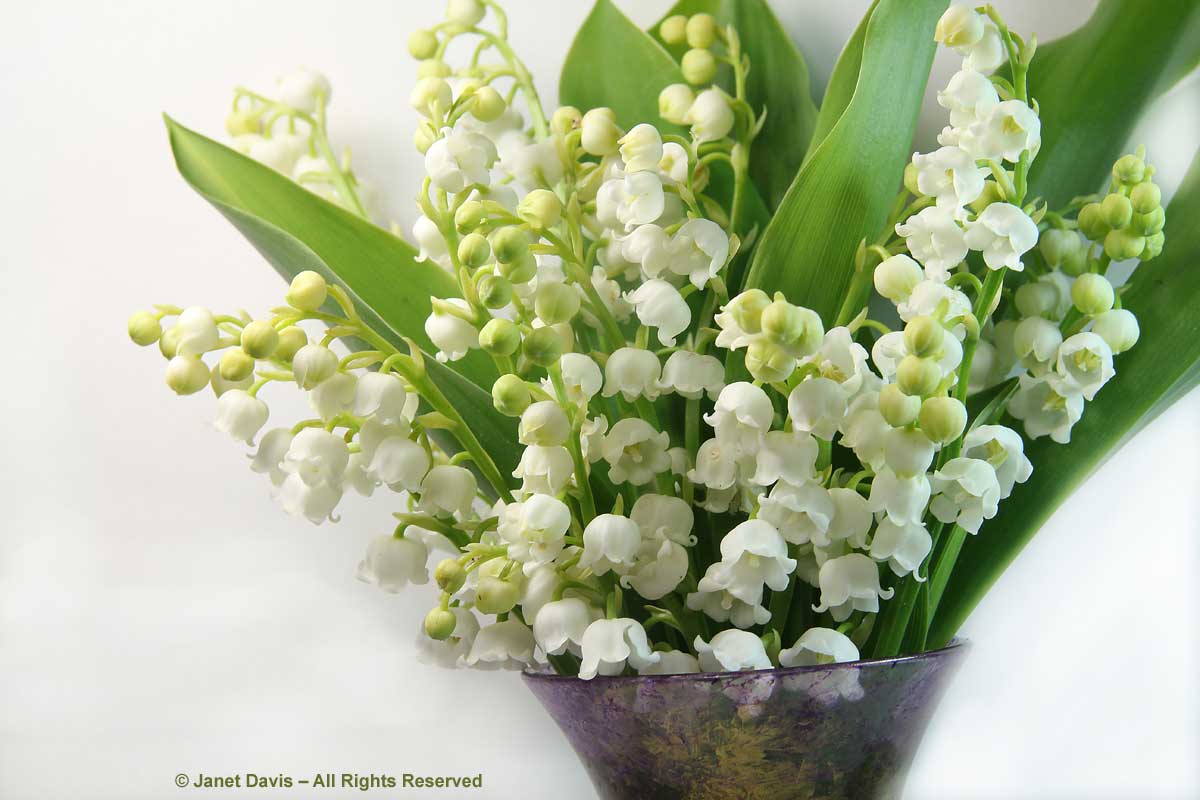
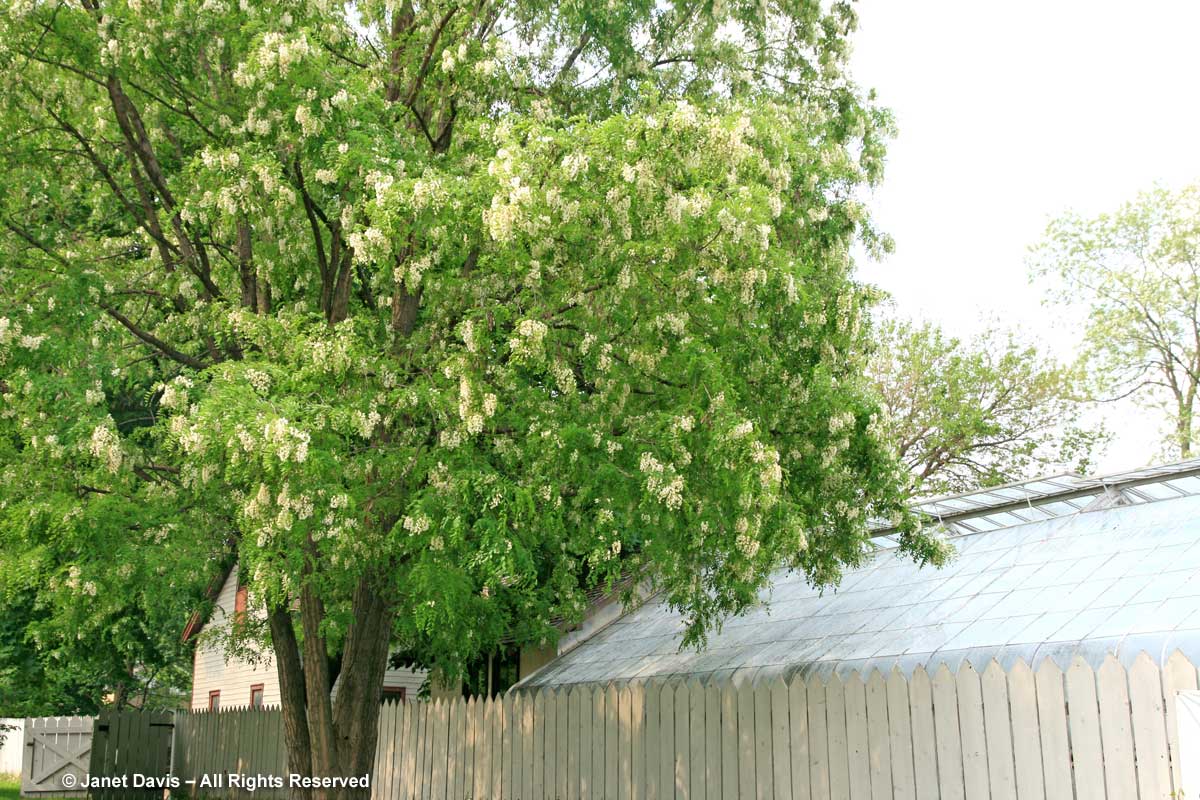
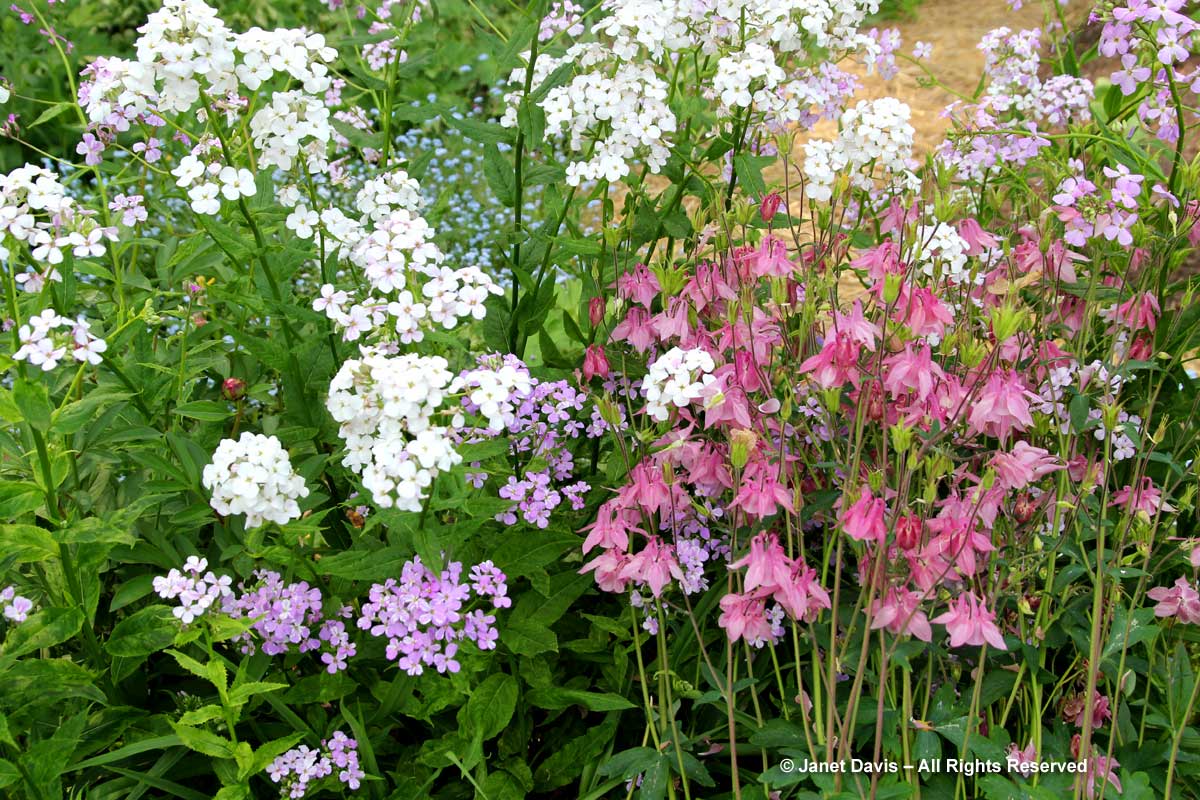
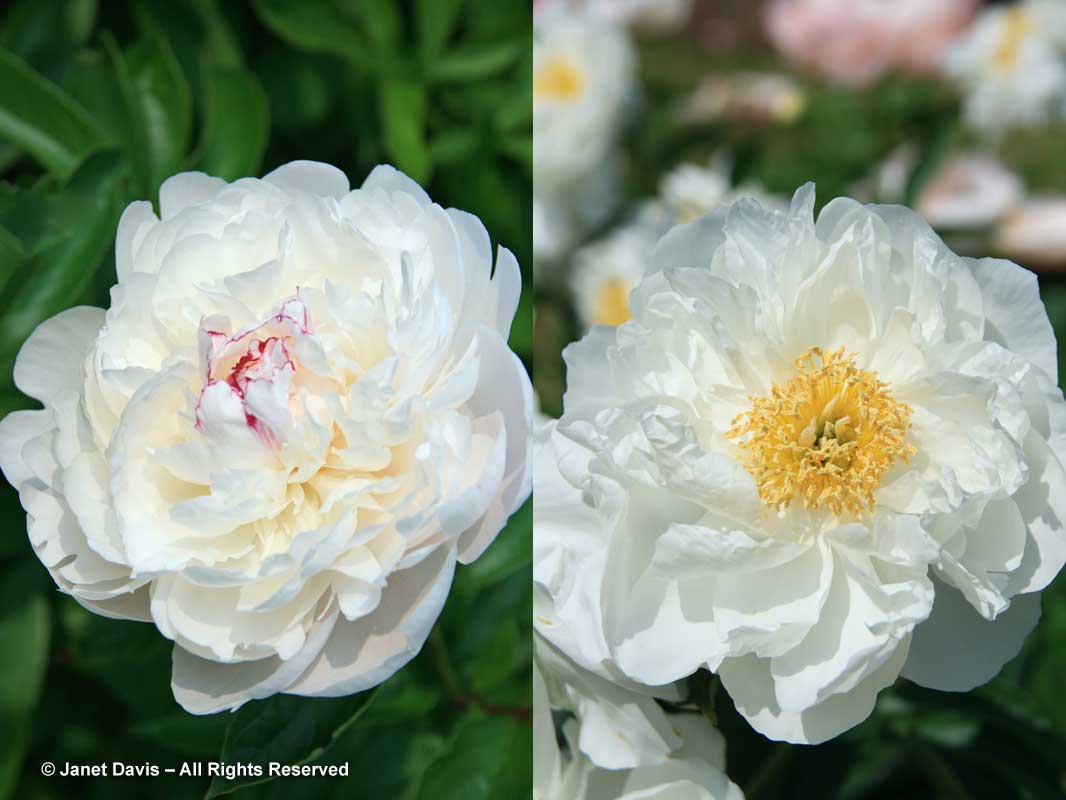
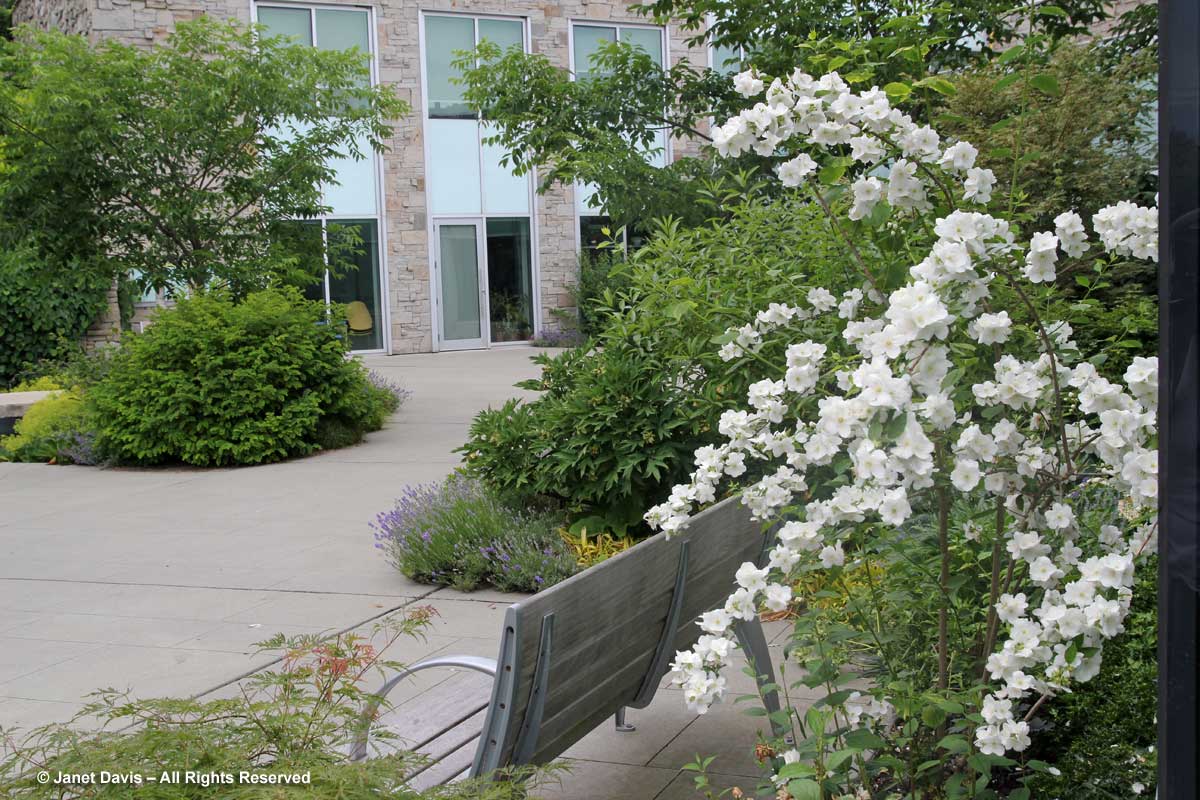
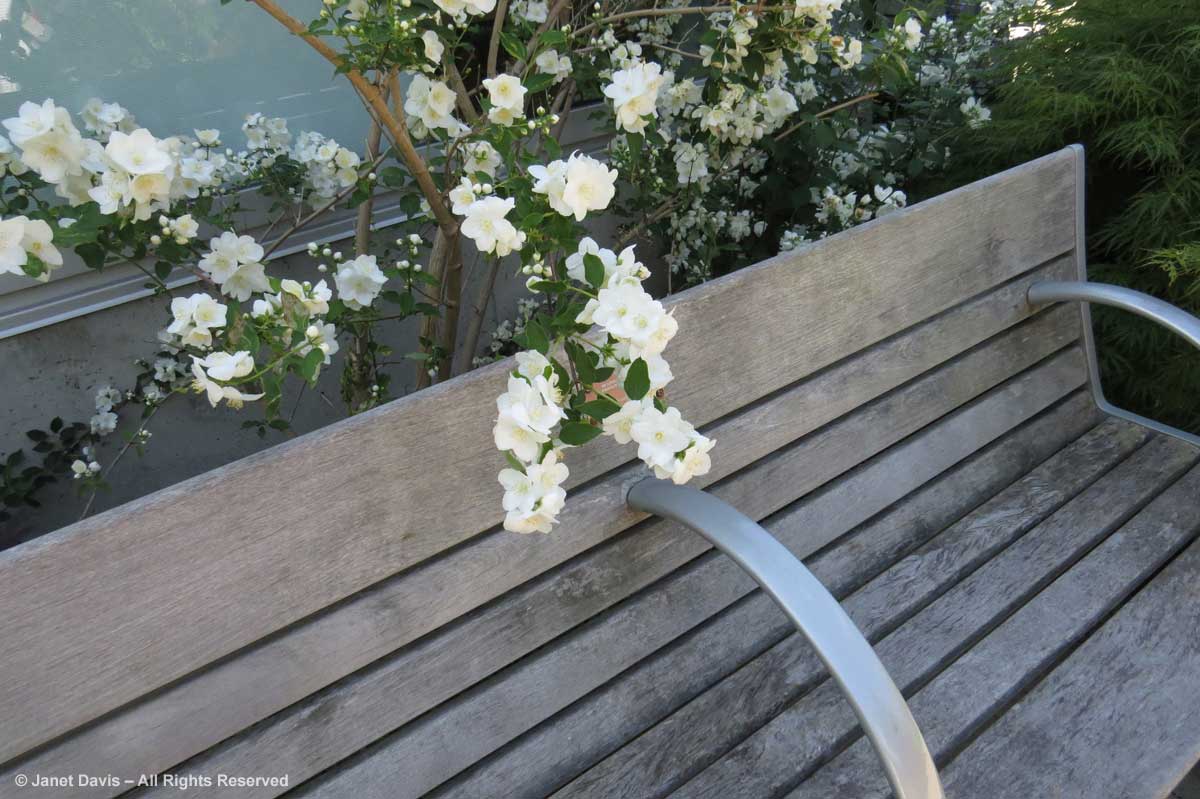
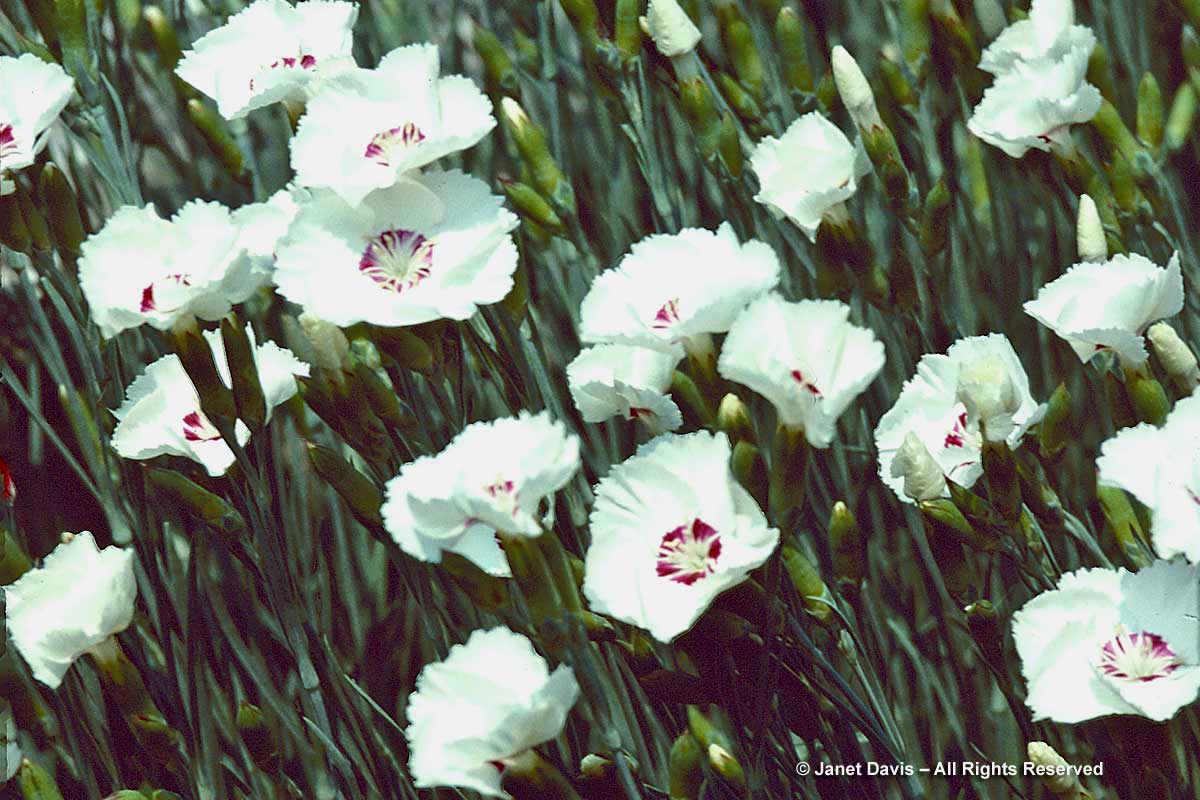
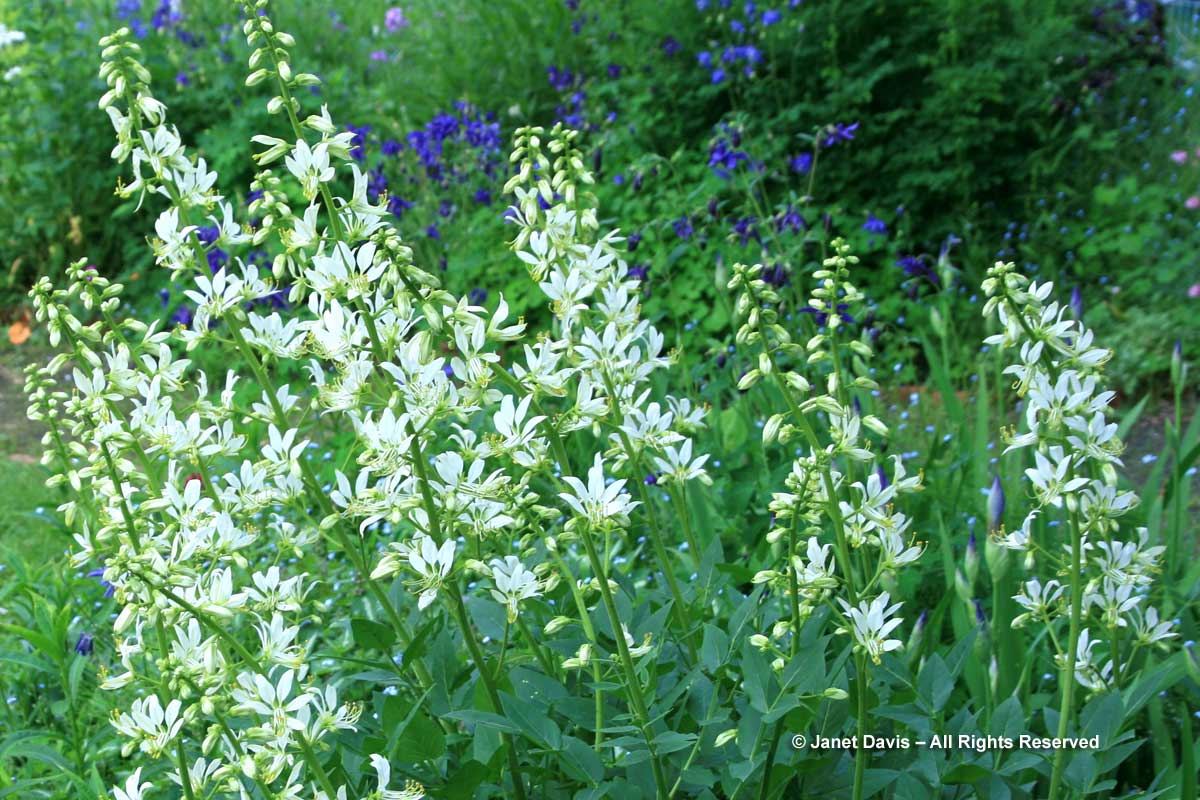
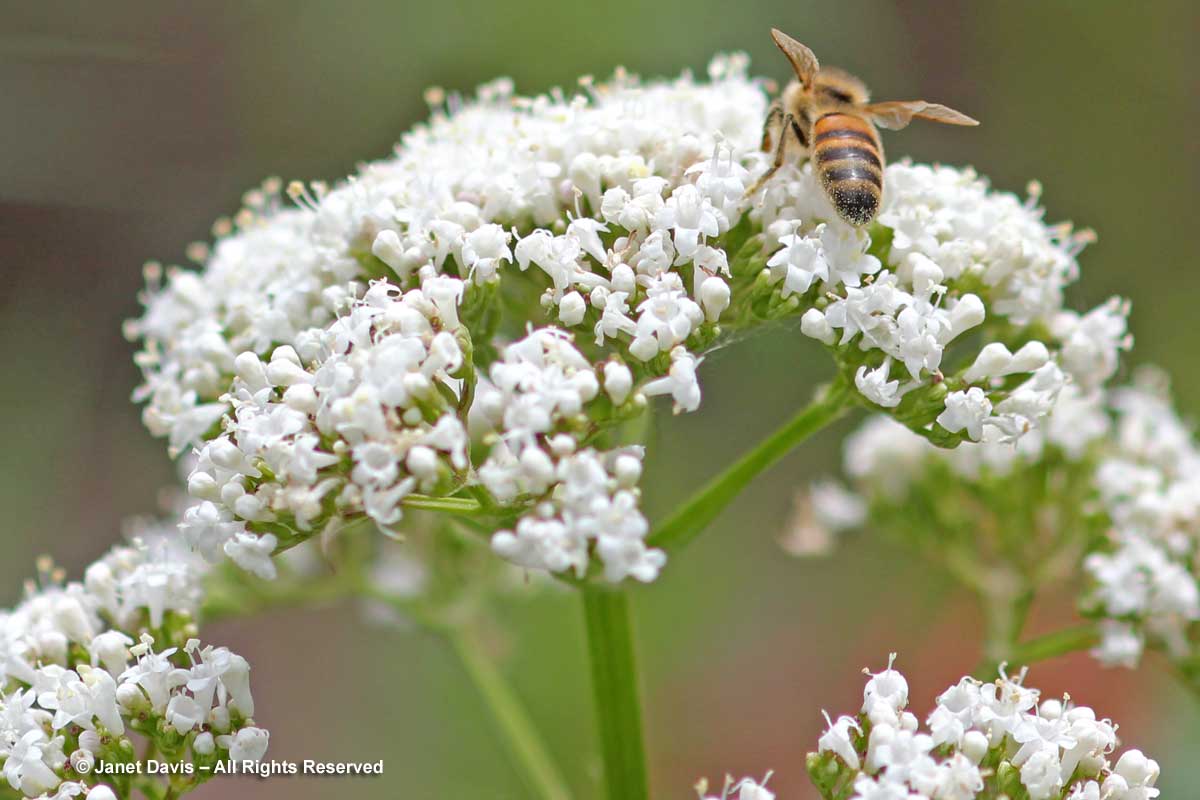
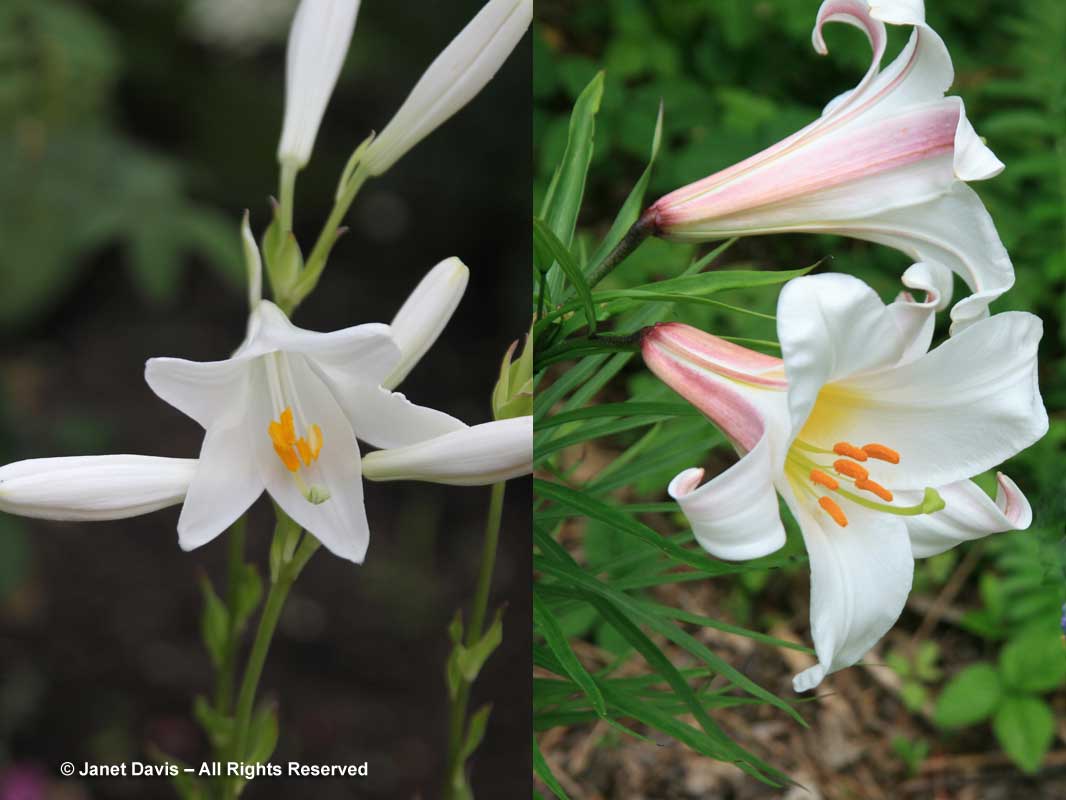
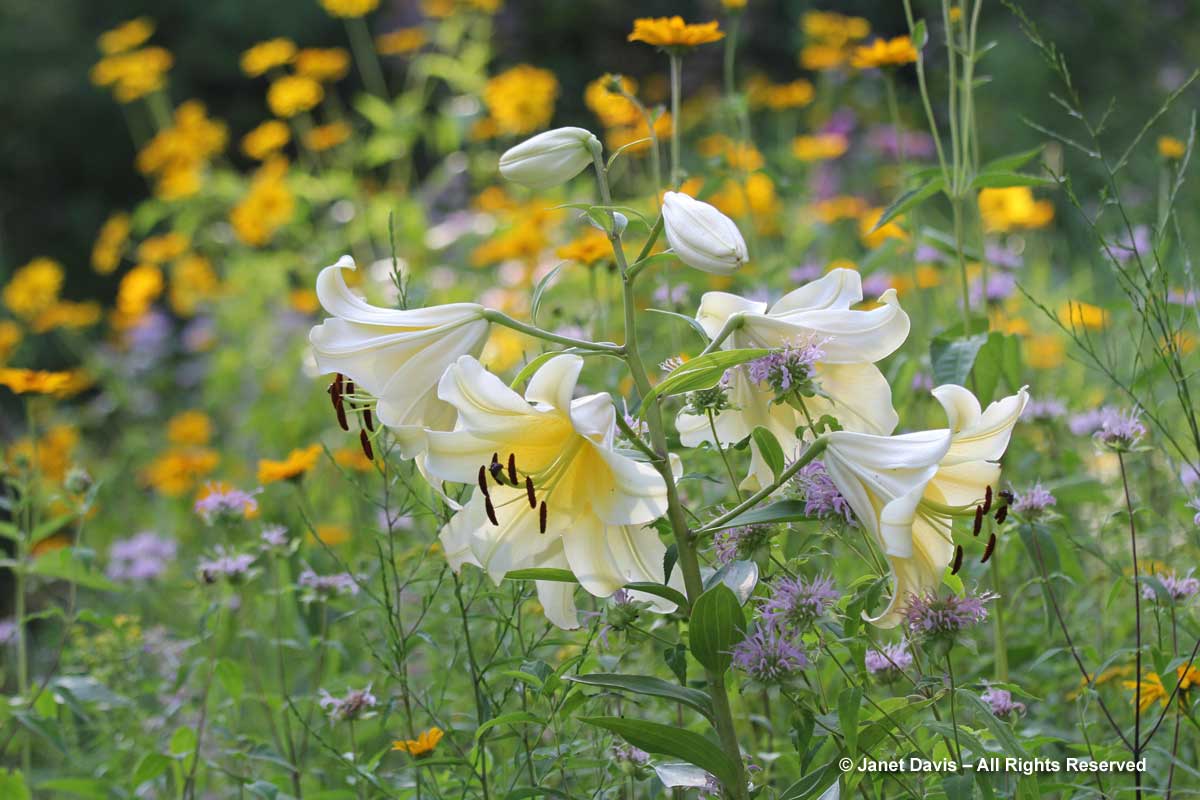
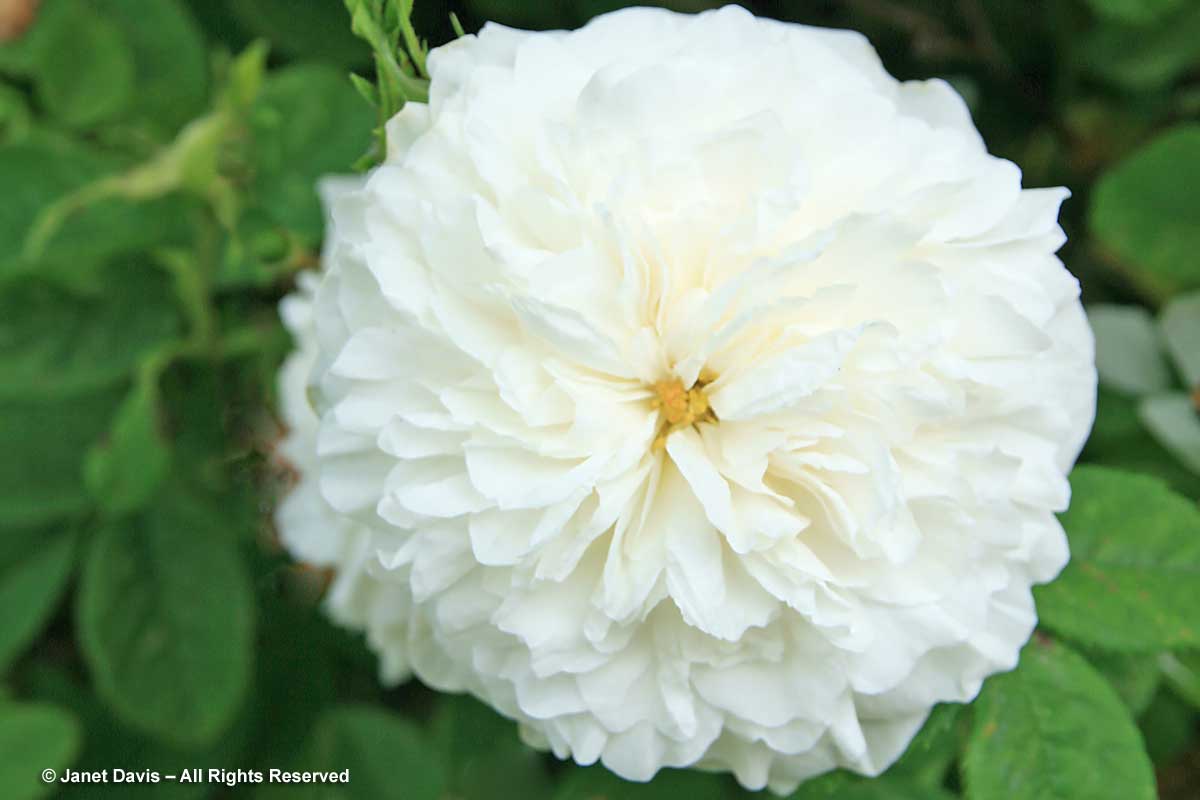
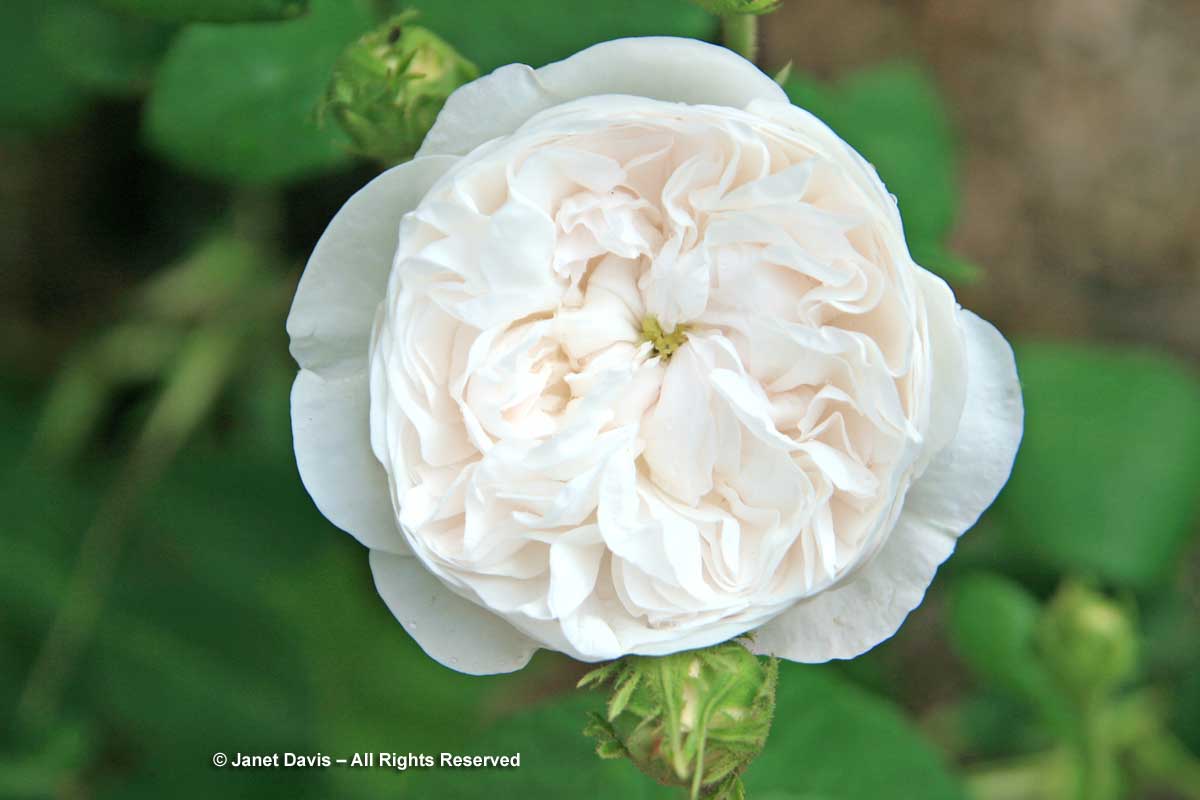
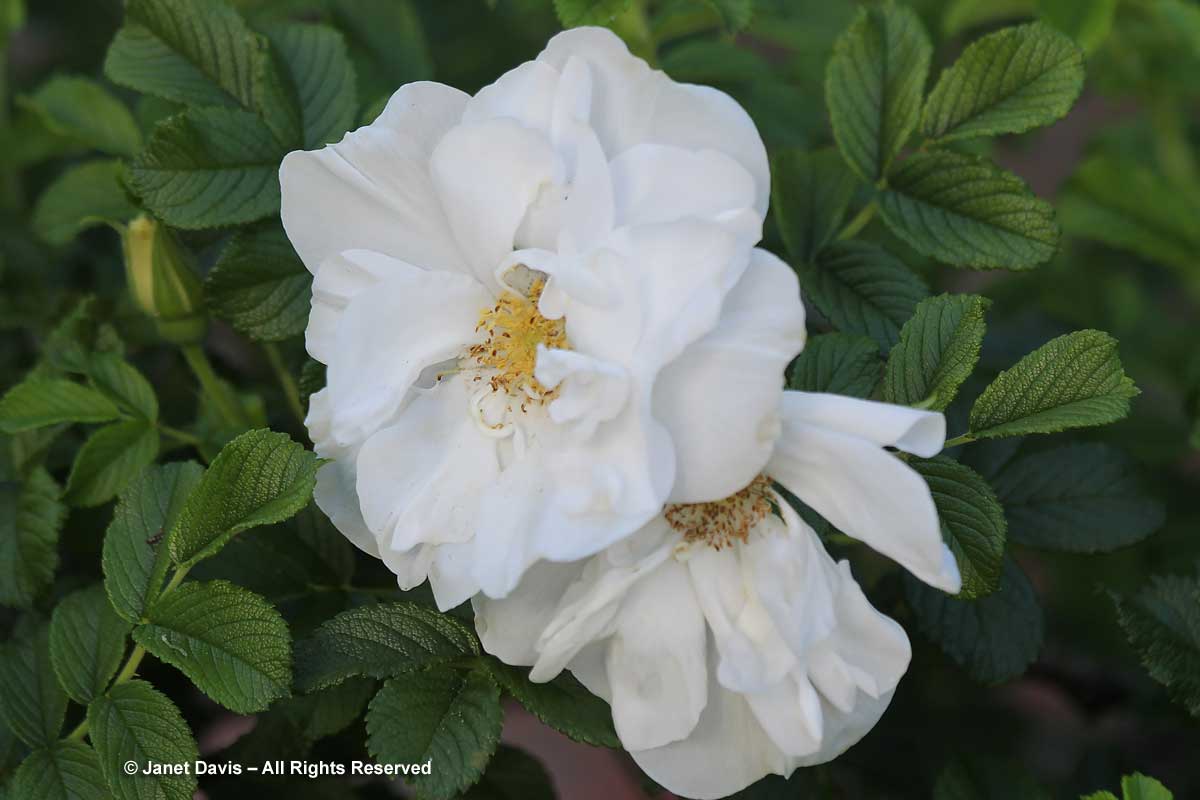
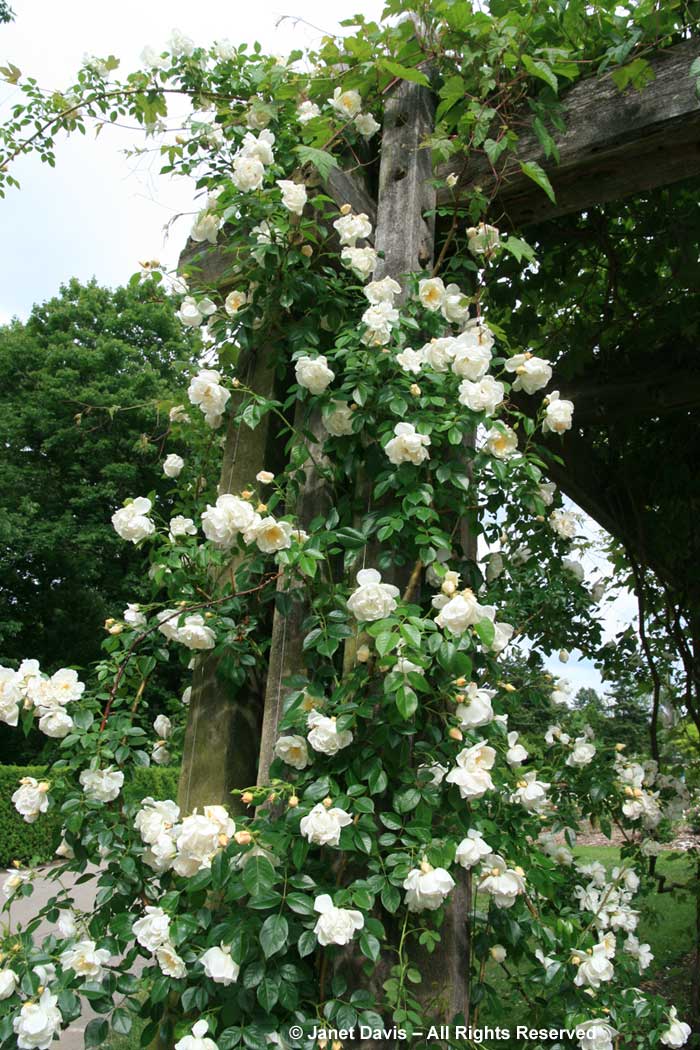
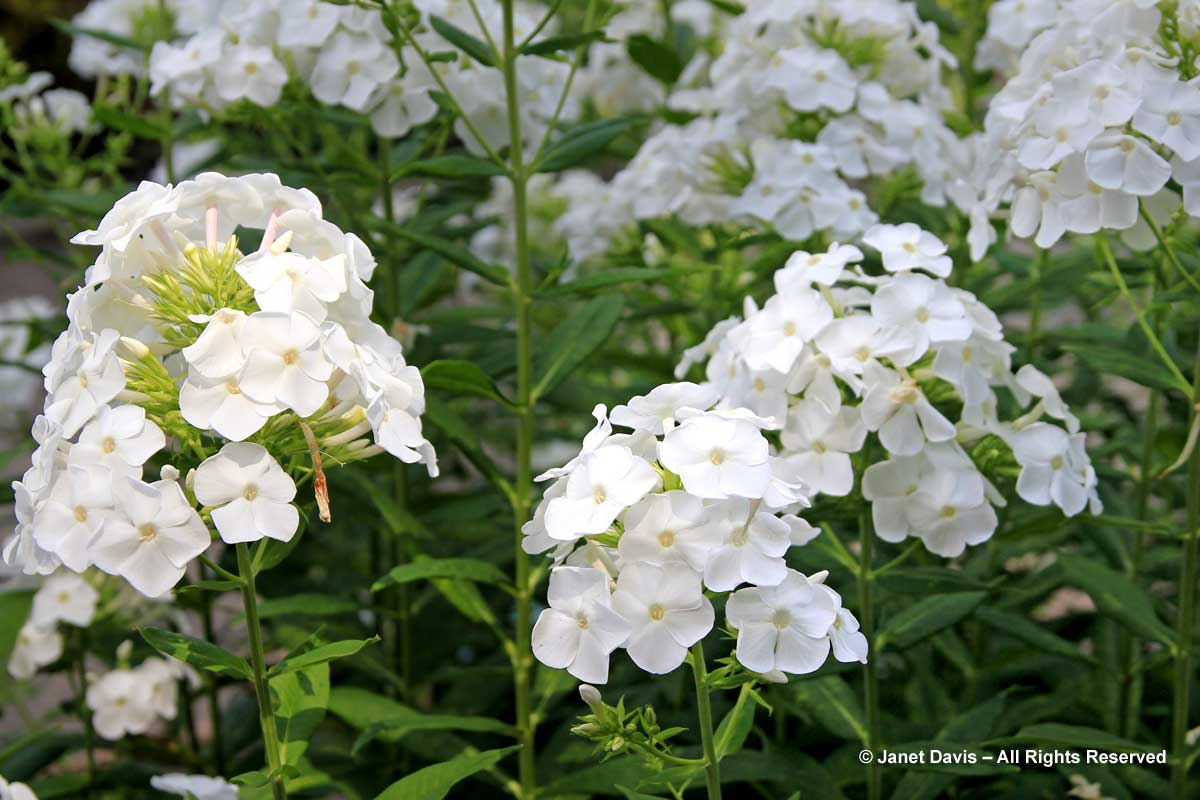
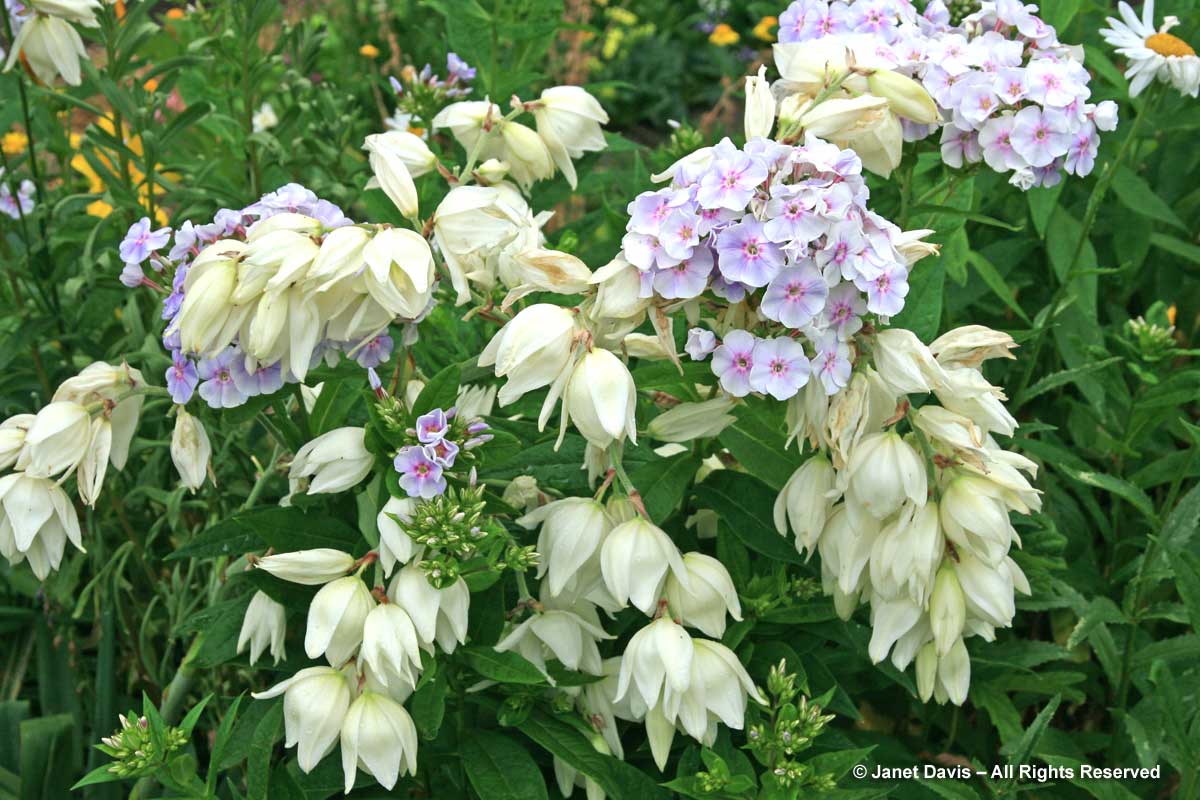
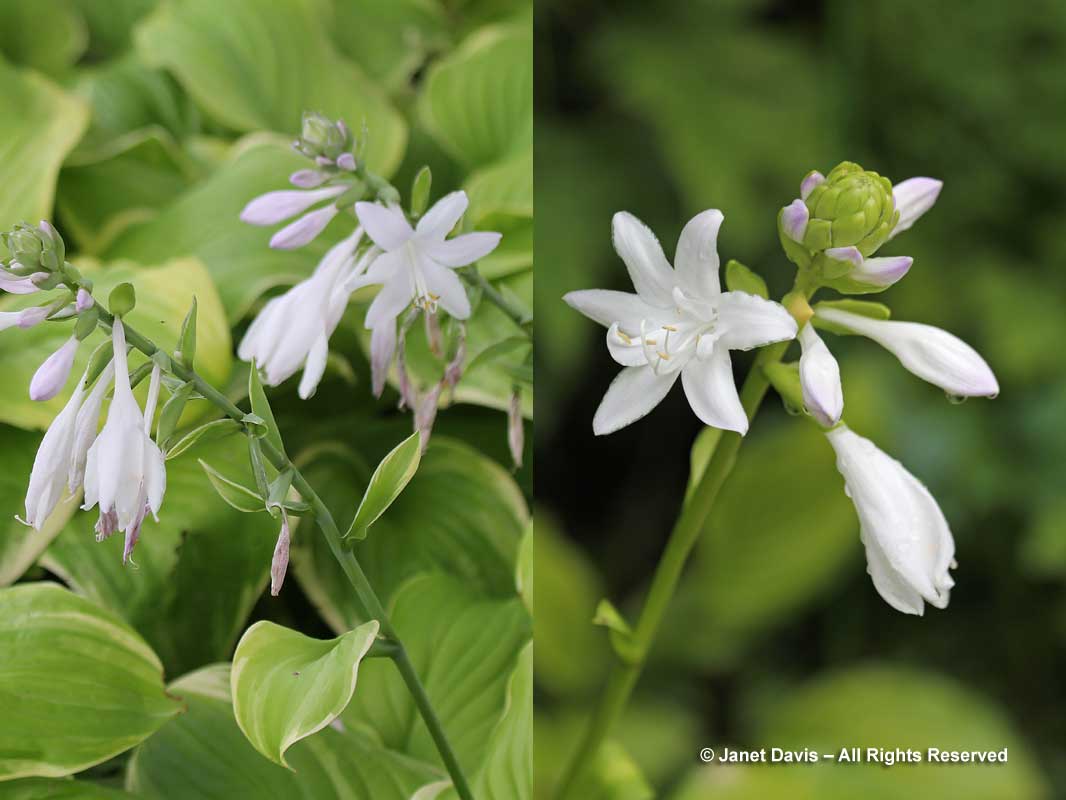
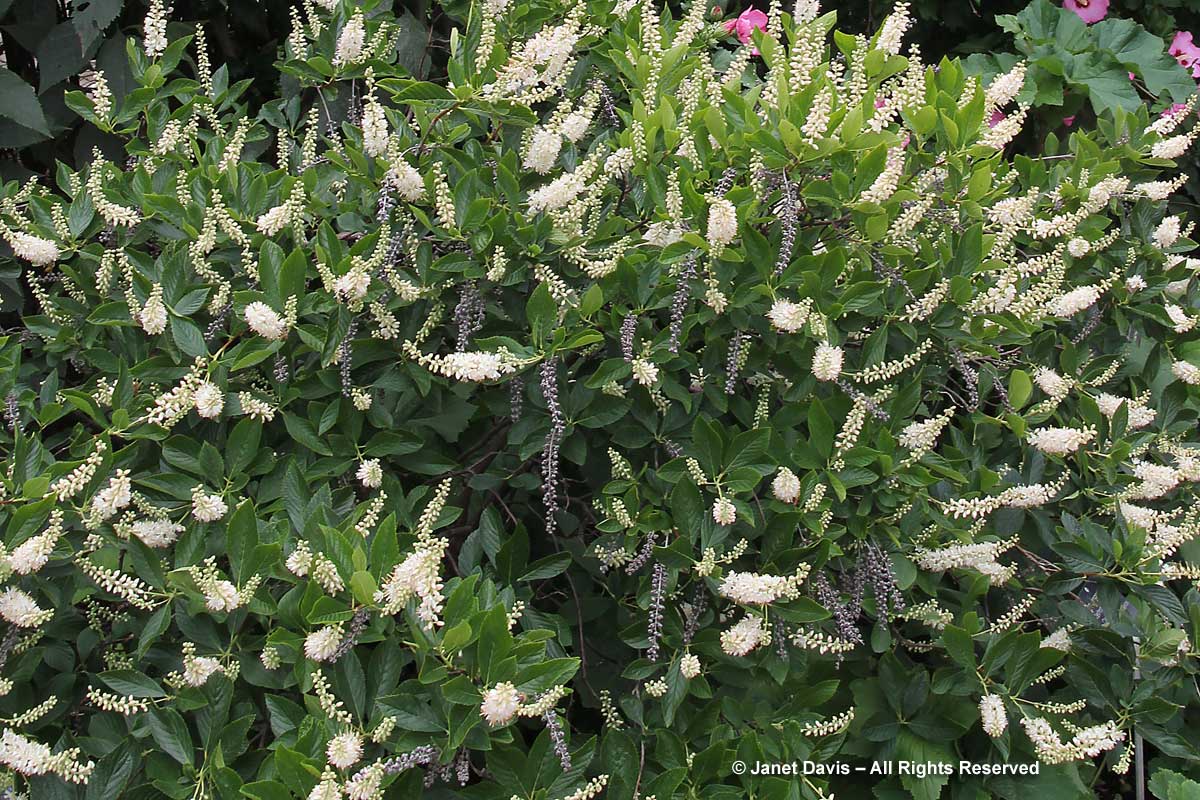
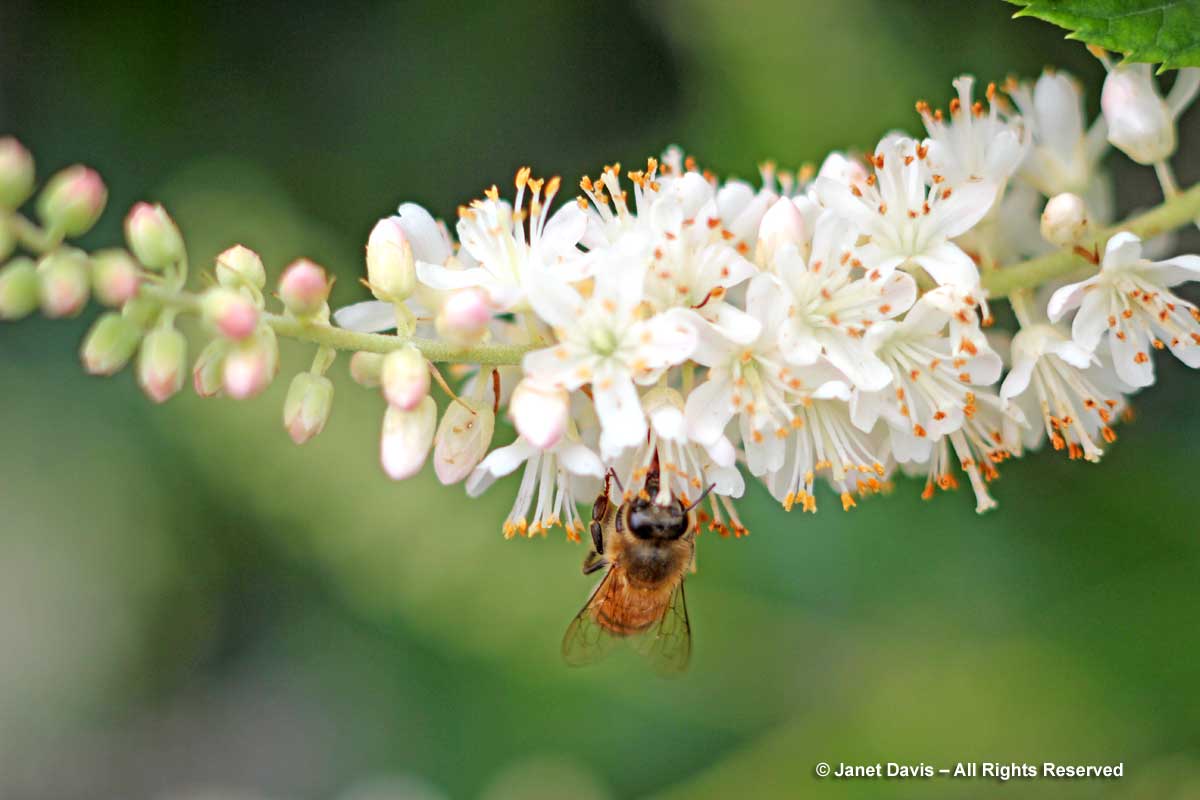
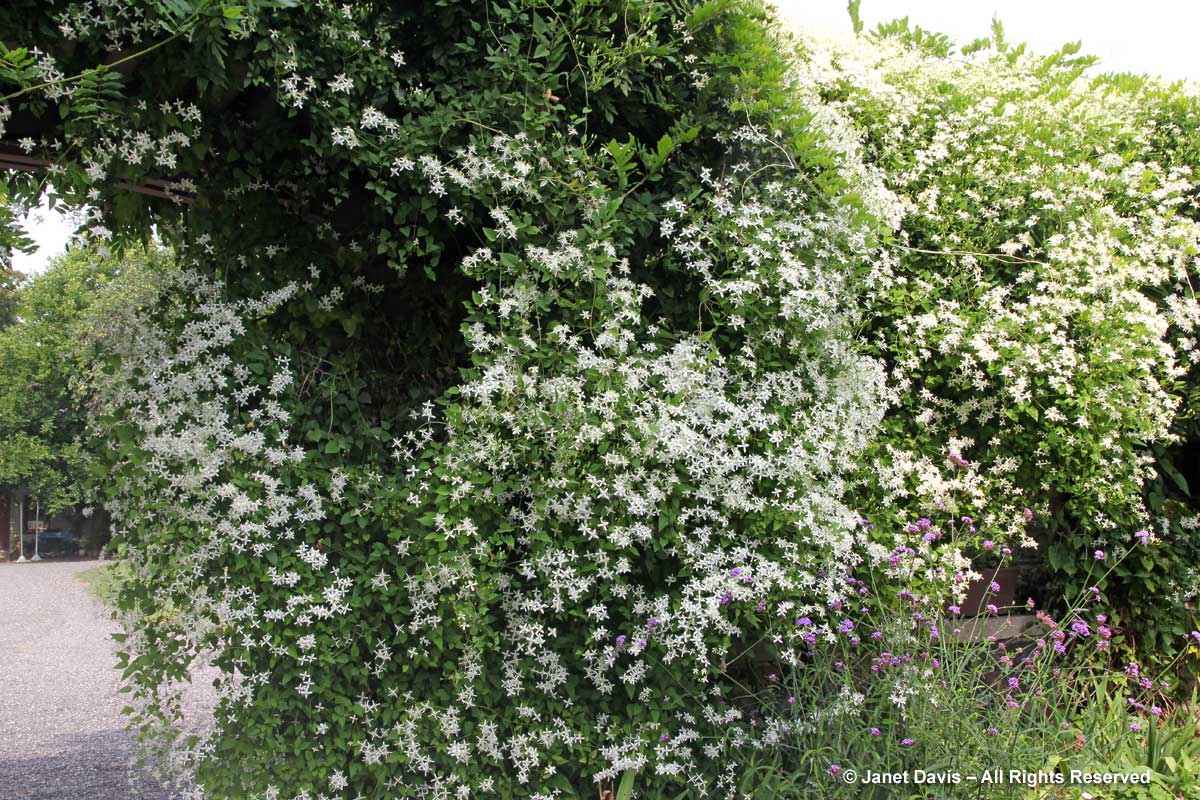
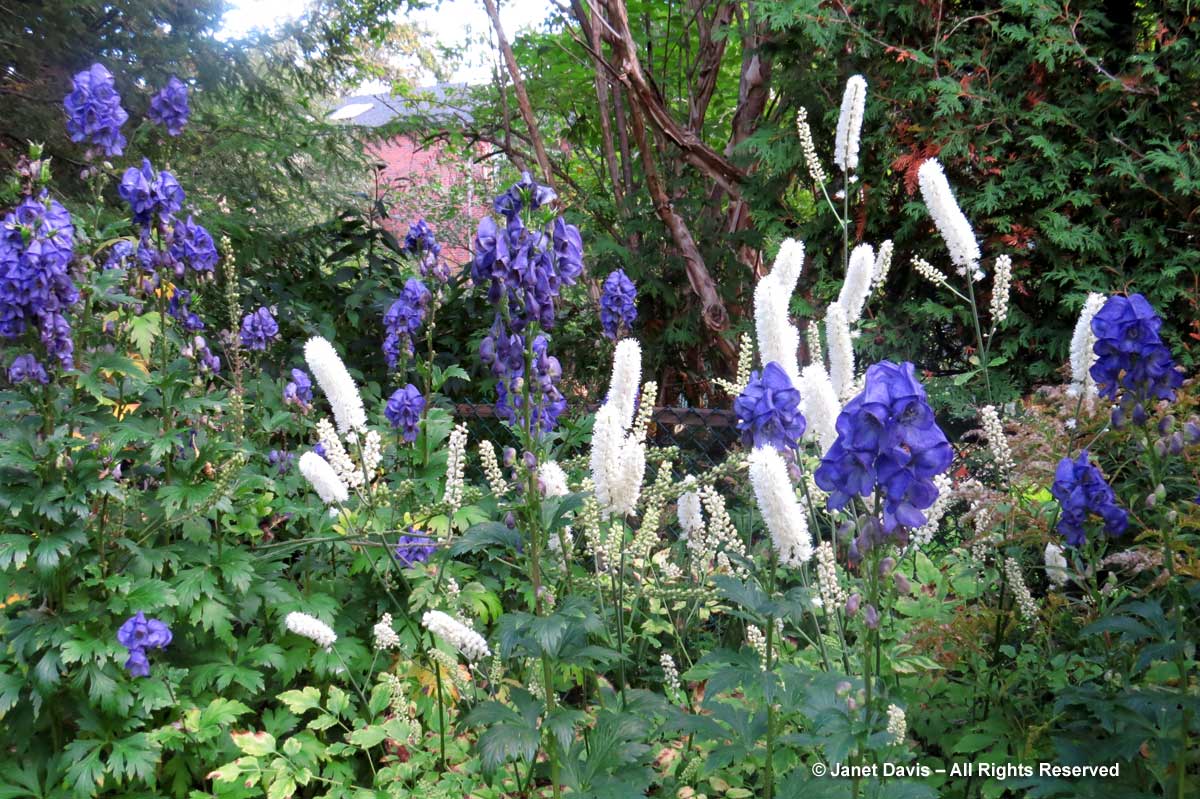
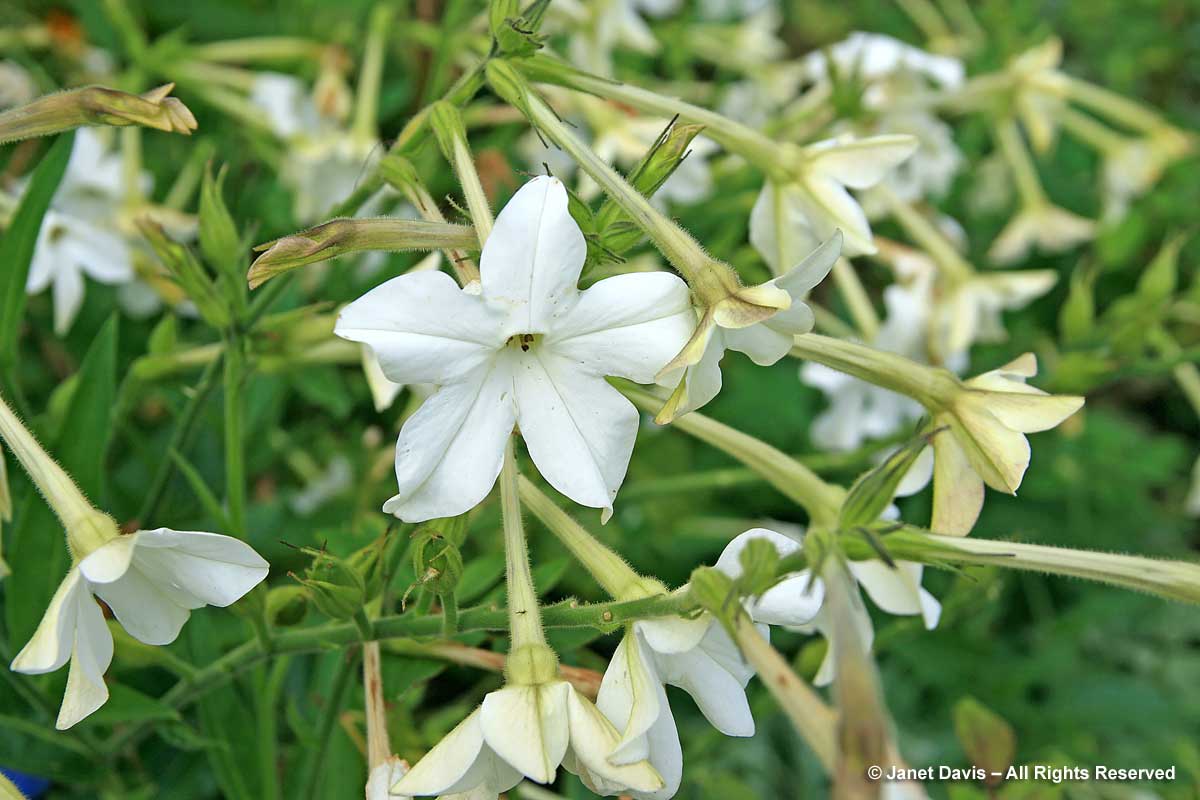
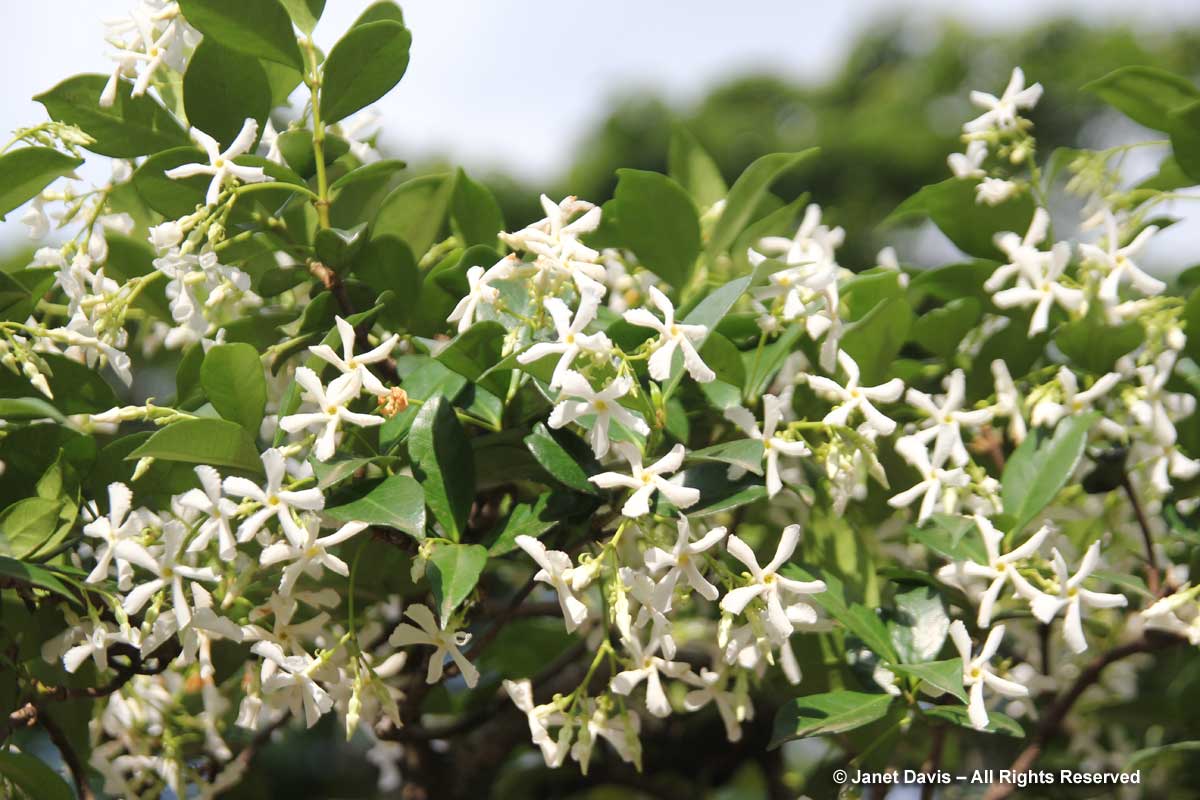
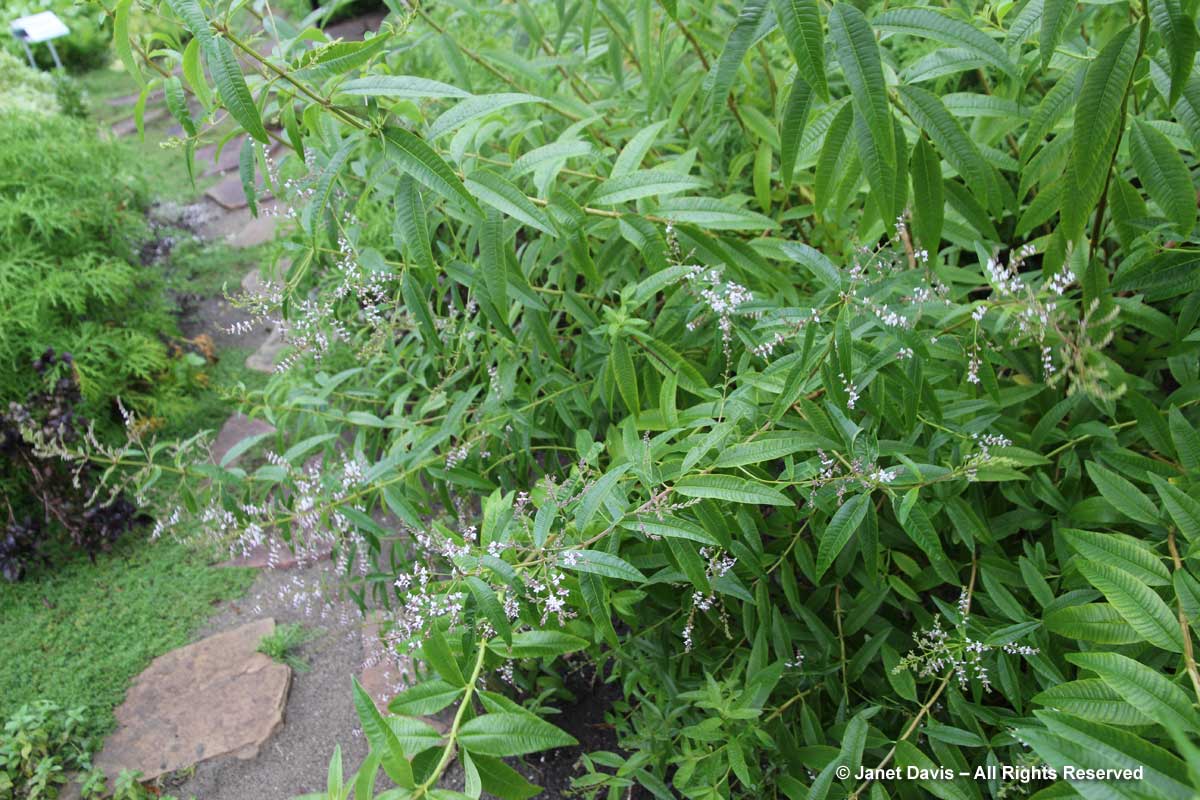
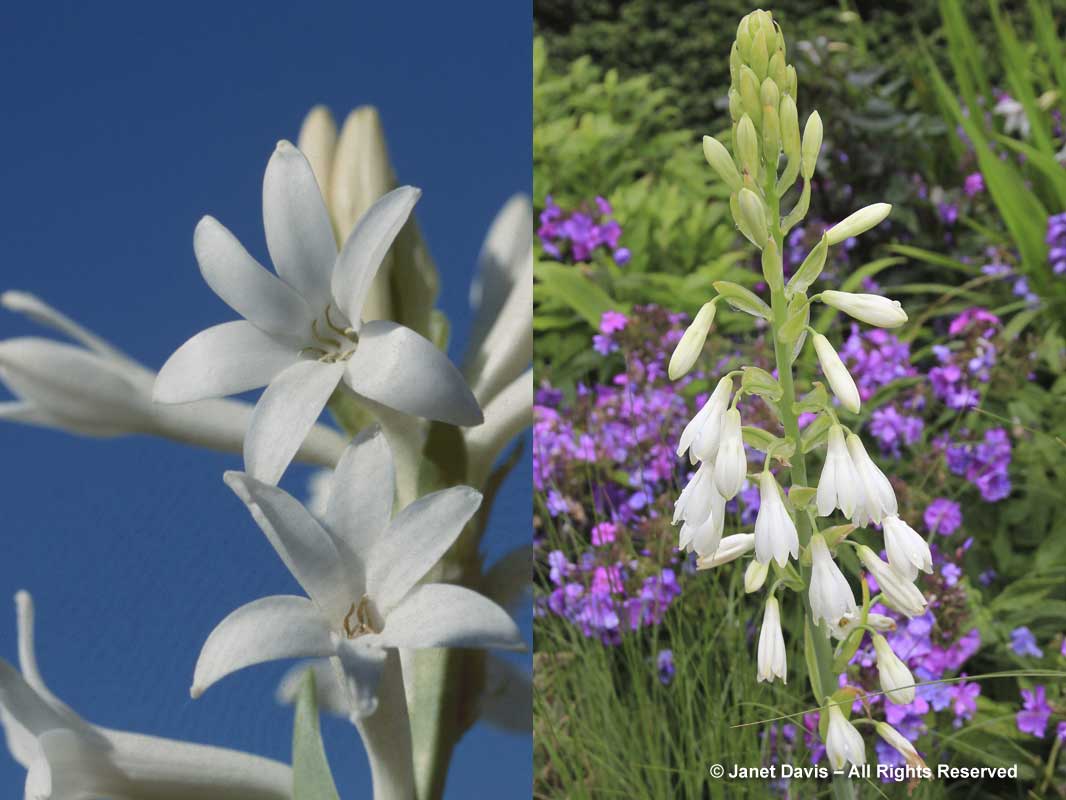
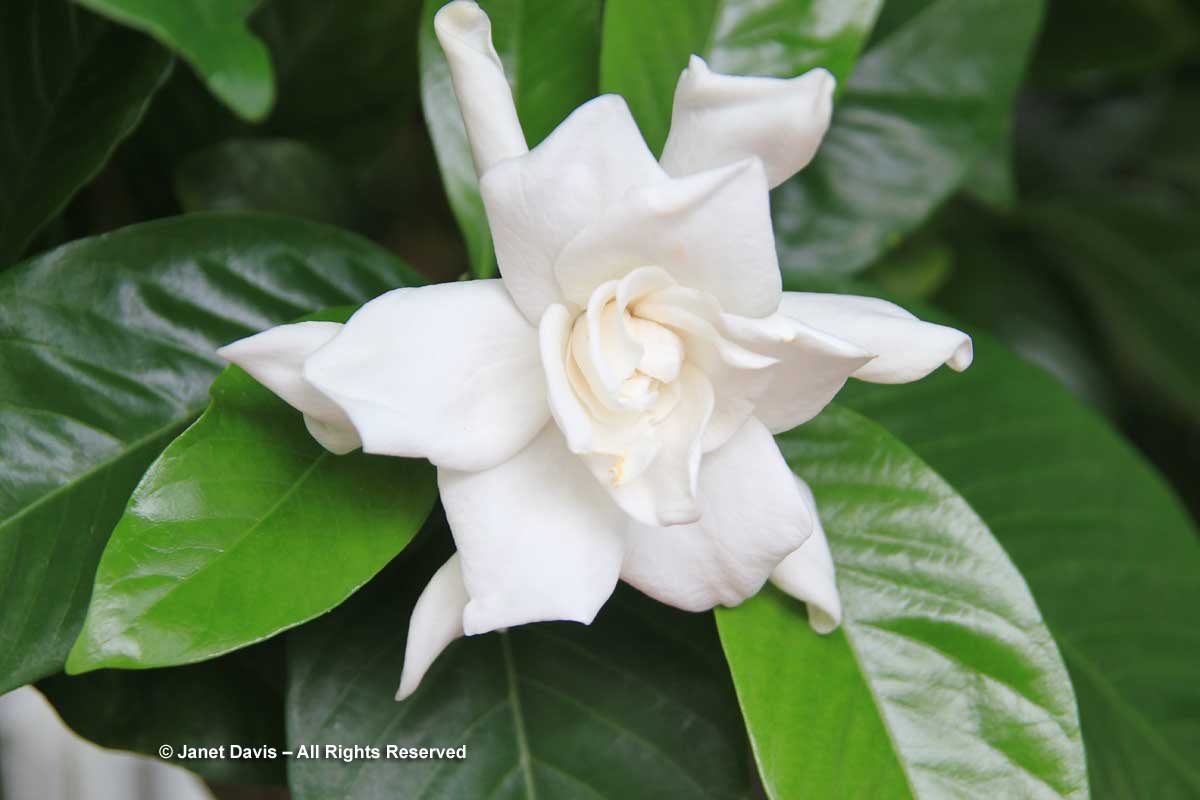
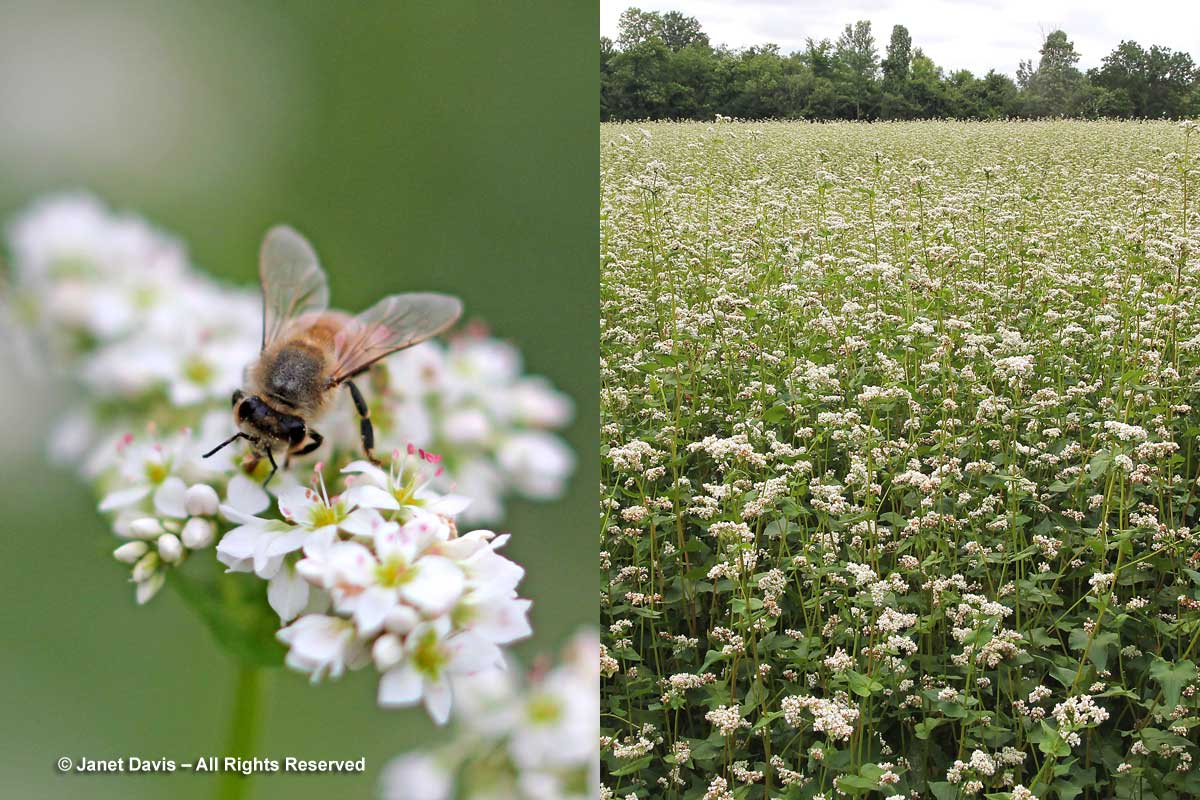
Beautiful website, beautiful pictures thank you for all the beautiful information!
Thank you, Patricia. You can subscribe via email! Cheers, Janet
Excellent article. Appreciate your efforts. Didn’t find the one I was trying to identify though. Flowering tree just up the road which has an amazing honey type smell. Trying to identify it, to see if I could make a cordial with the flowers. I’ll keep Google hunting
Hi Janet,
Yes I too am up early and wishing for the enticing delight of all these beauties. Santa Fe is great but its tendency toward lack of humidity brings its challenges to emitting fragrances but several plants do fine like the soon up coming Lilacs ! We have two growers of tubaroses both which have become friends….my favorite along with white ginger. This article was such fun to spark the imagination I didn’t know about the August Beauty variety of Gardenia’s. For a commission of a historic home and garden in Plaza Chamisal – I found my favorite Austin Jude the Obscure – although not white a fragrant winner with beautiful form. Bella Primavera !! from Maggie
Thanks, Maggie. I rarely see tuberoses anymore. And white ginger is something we never see in cold Toronto. Bella Primavera to you too (as soon as the latest snow melts…)